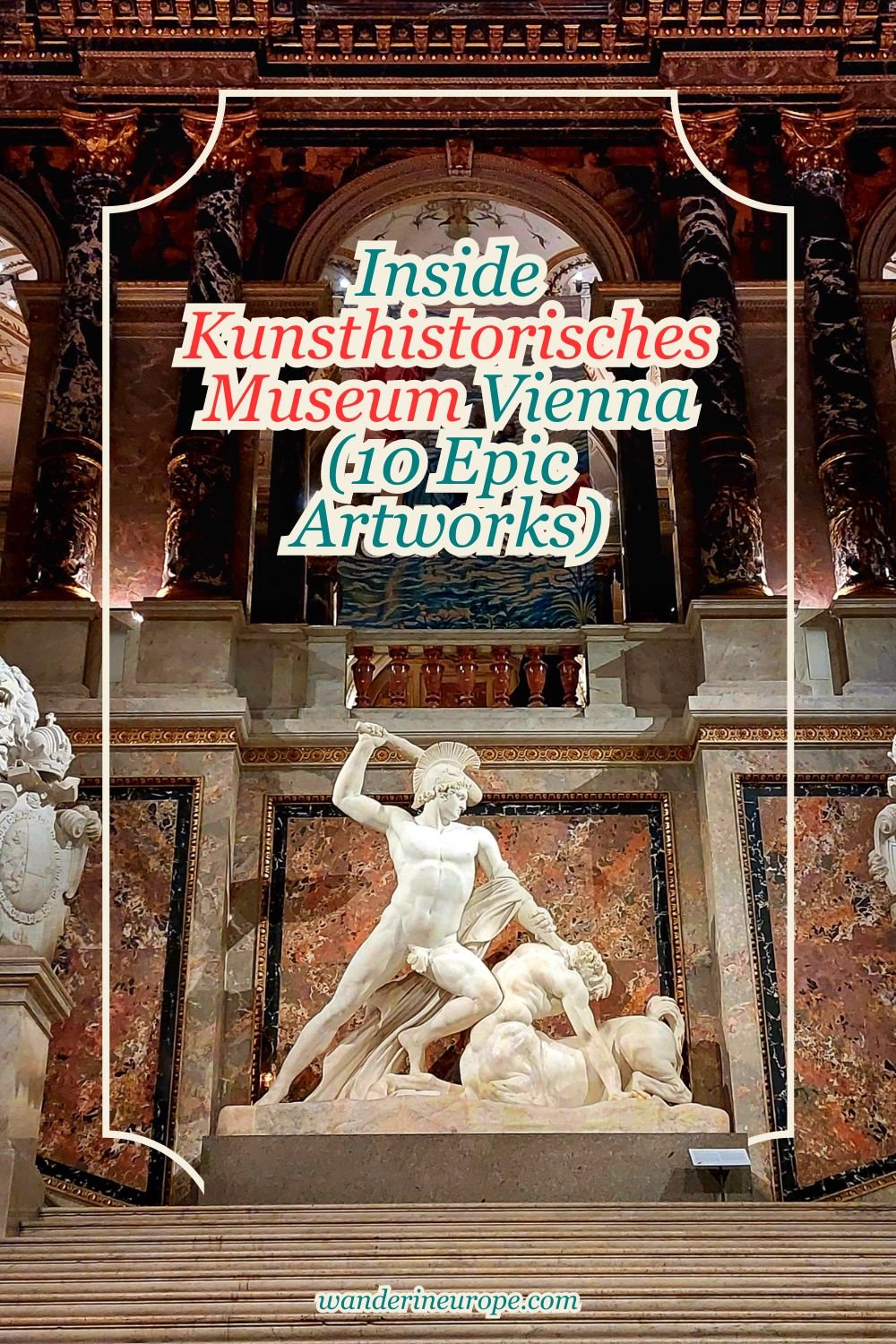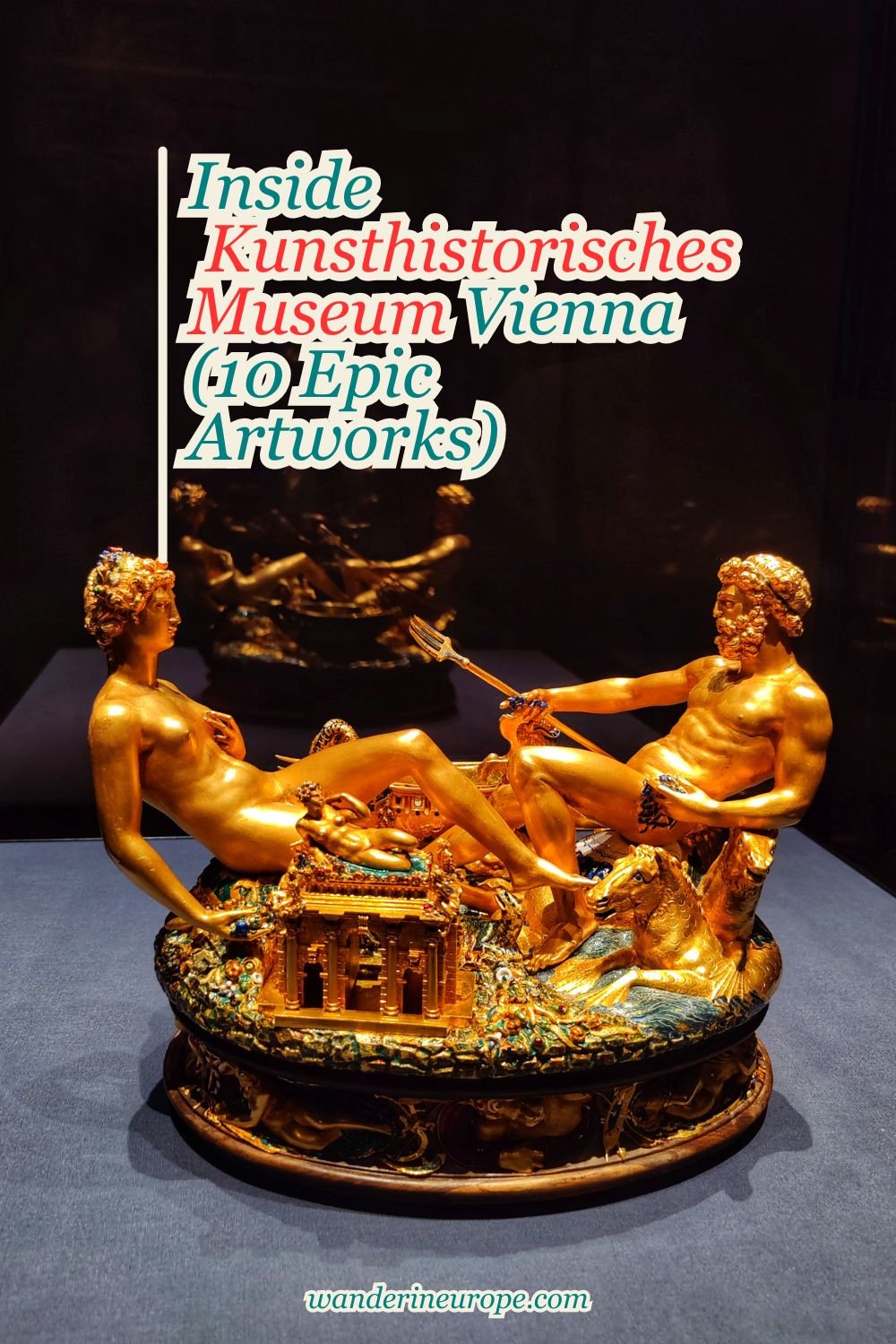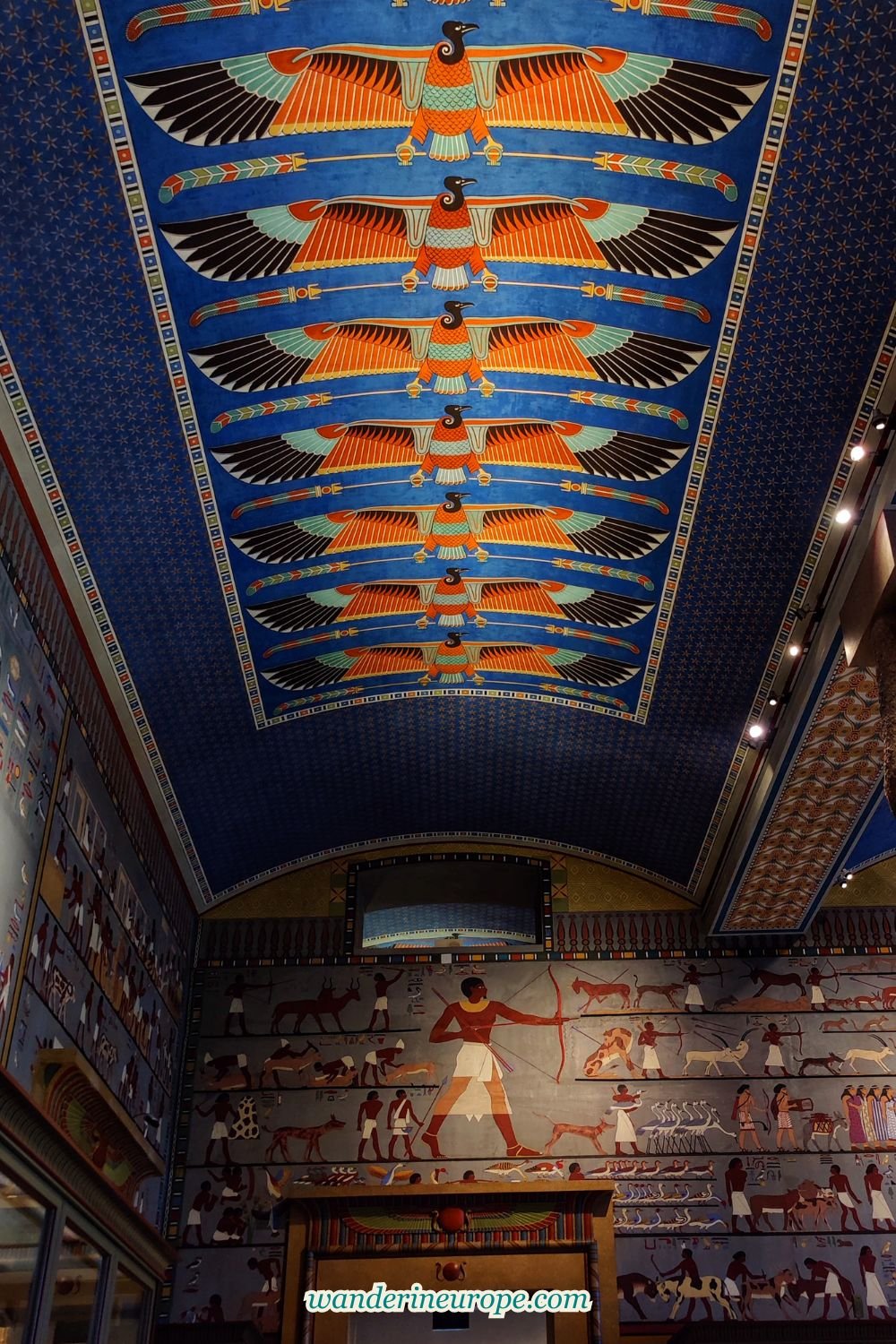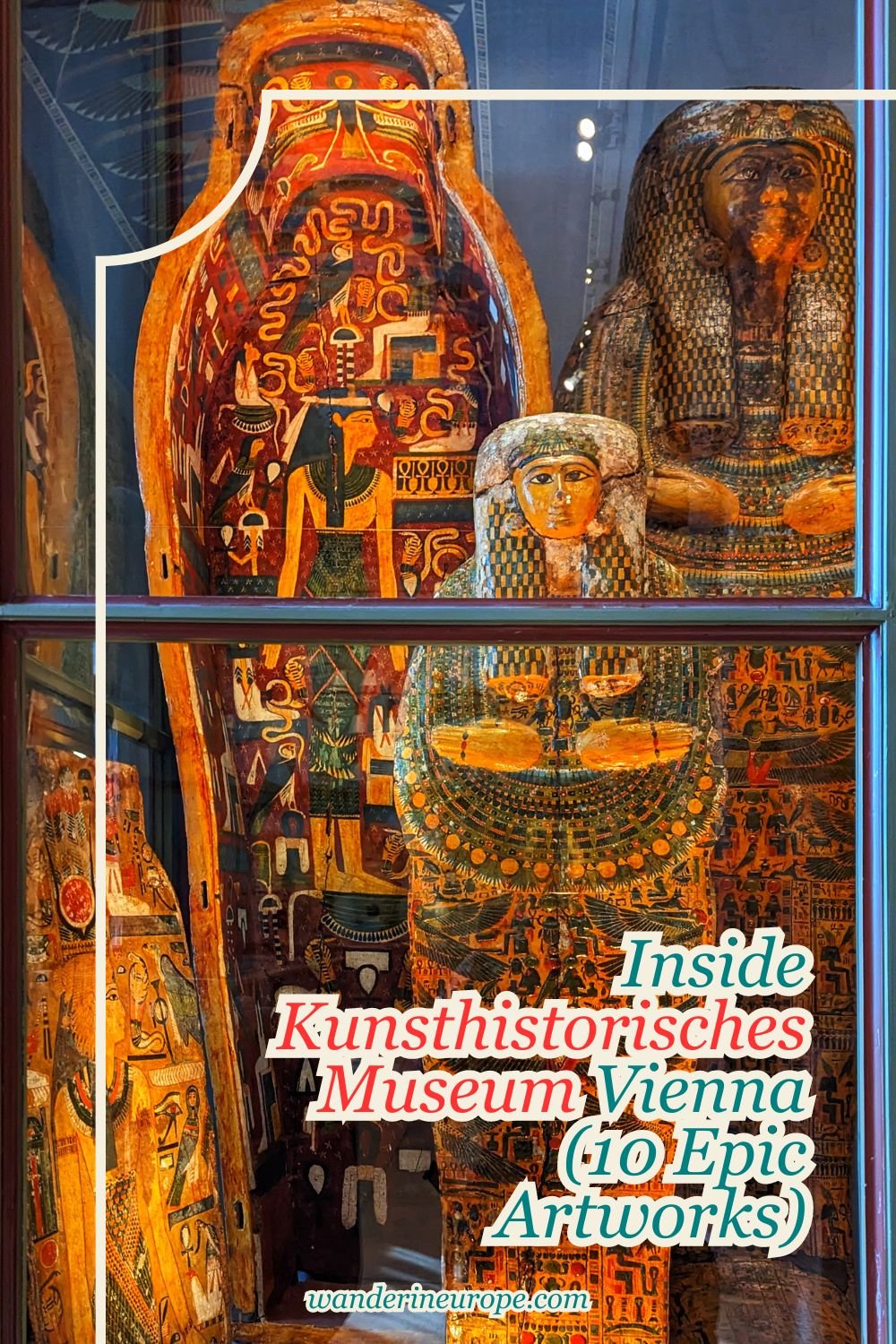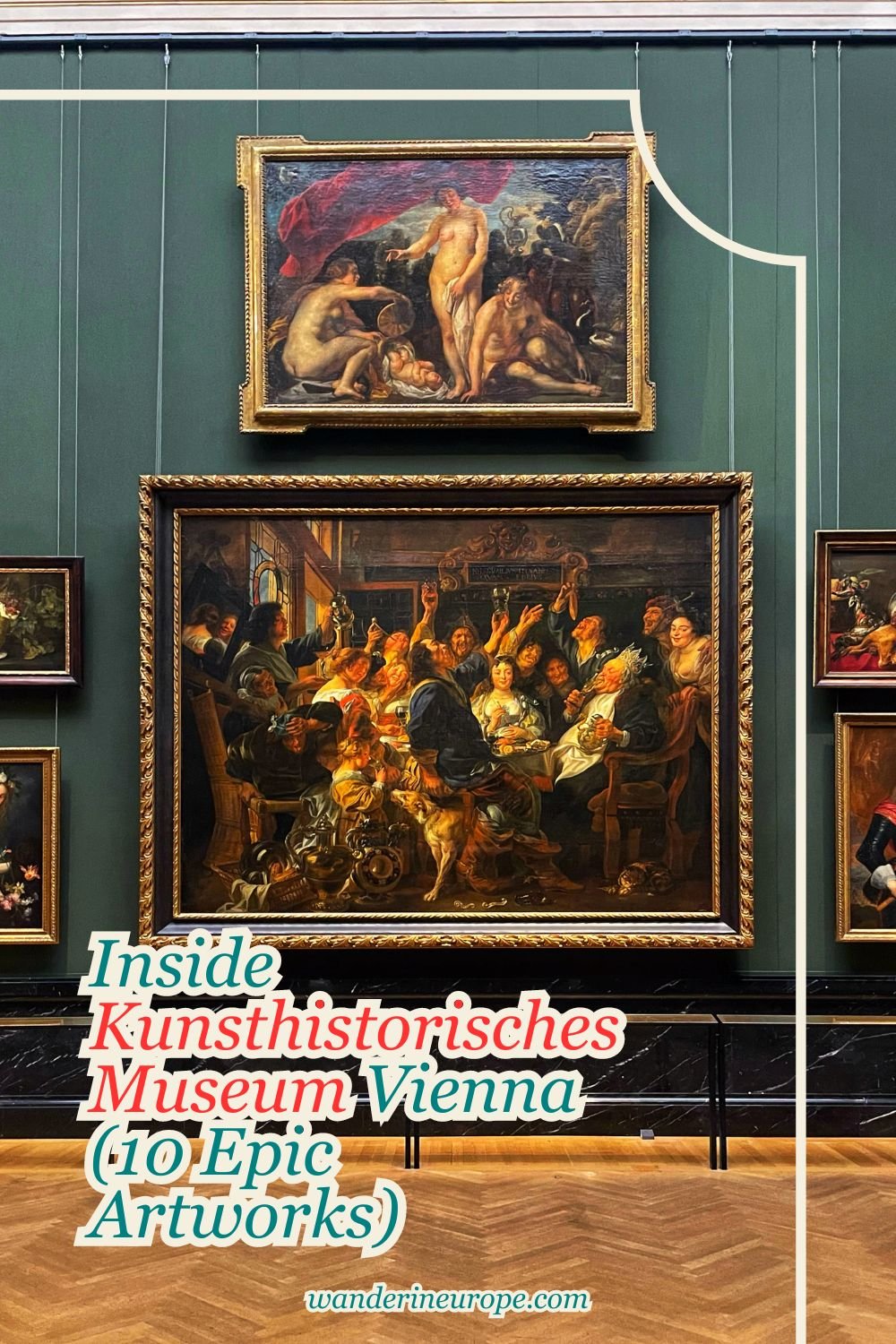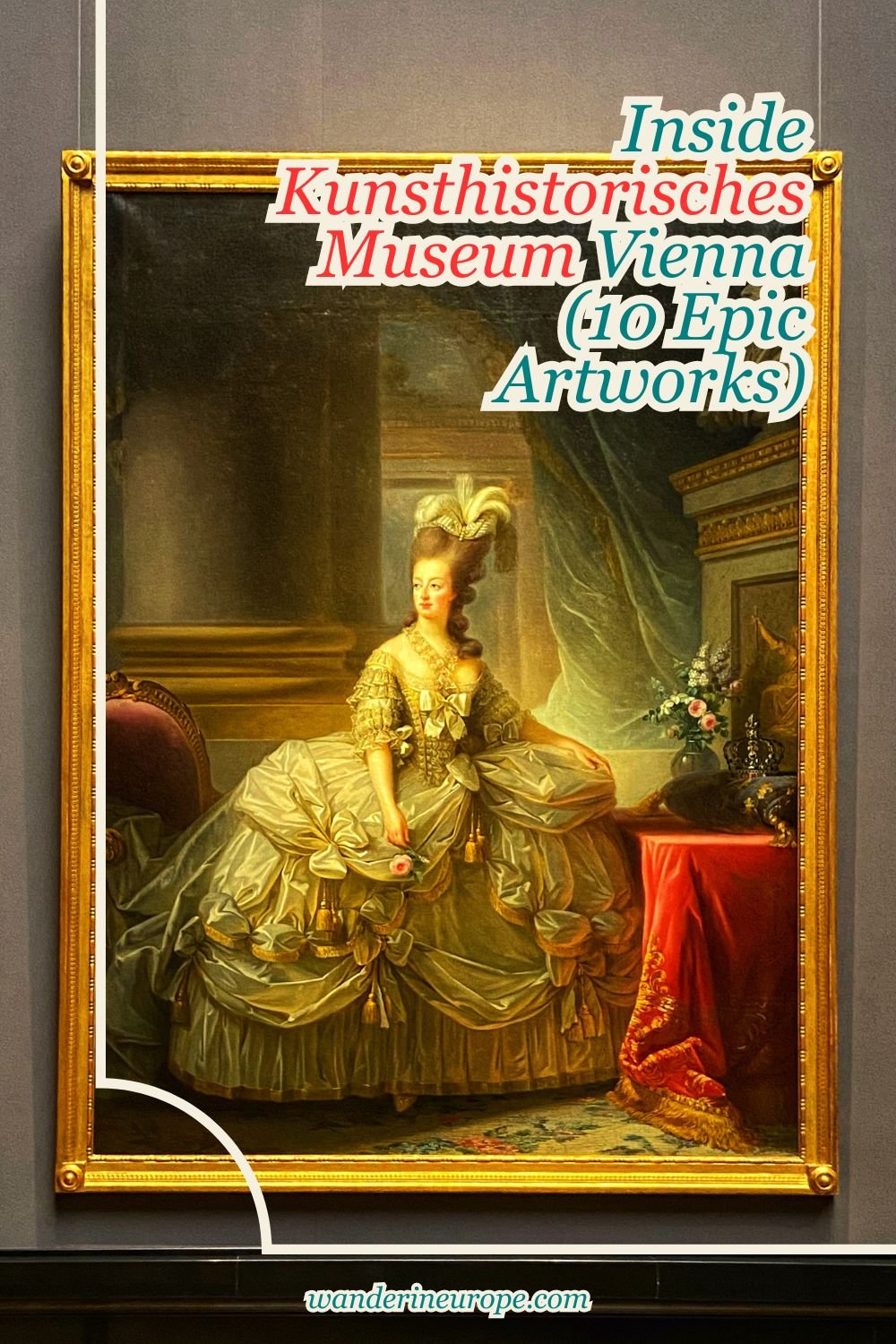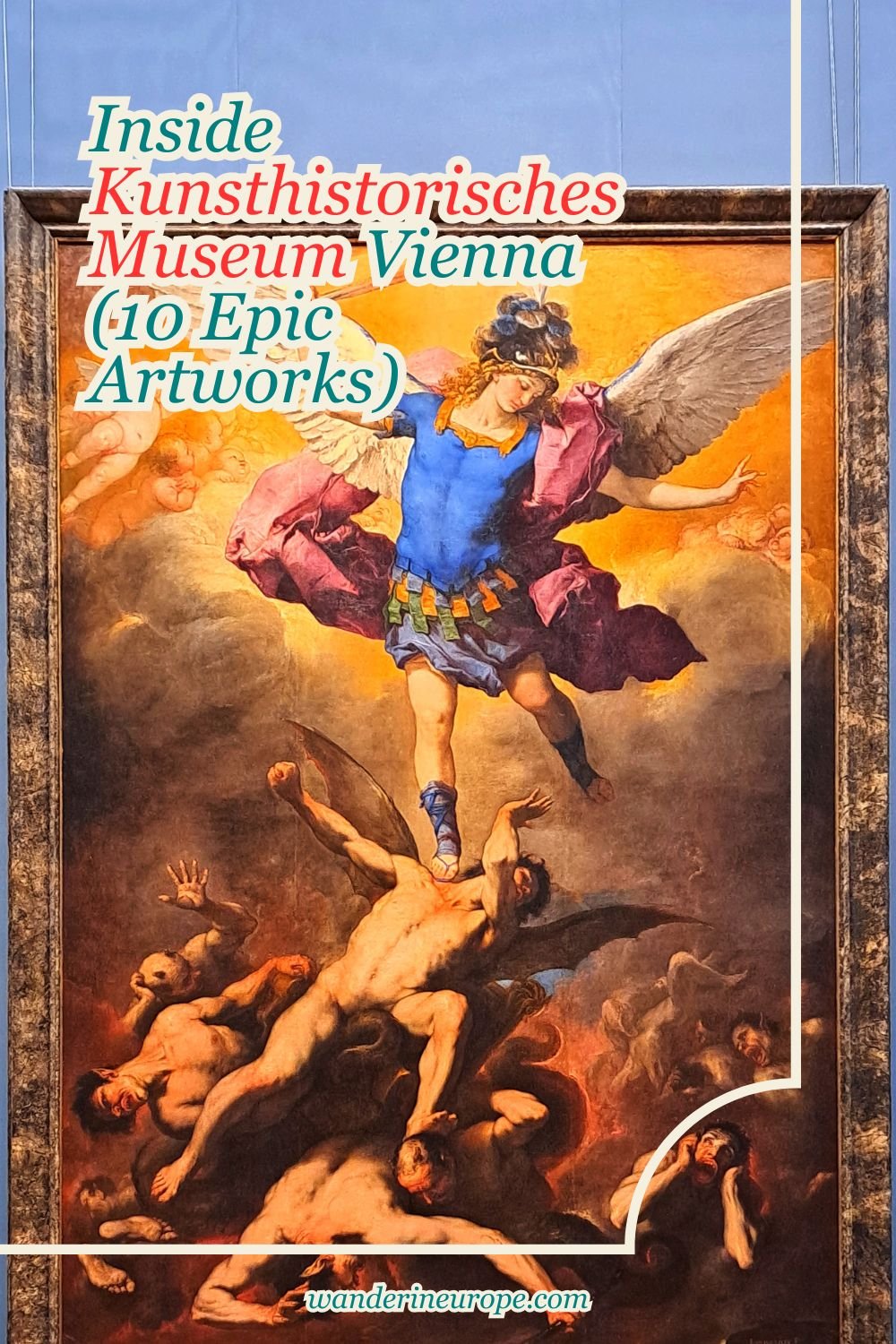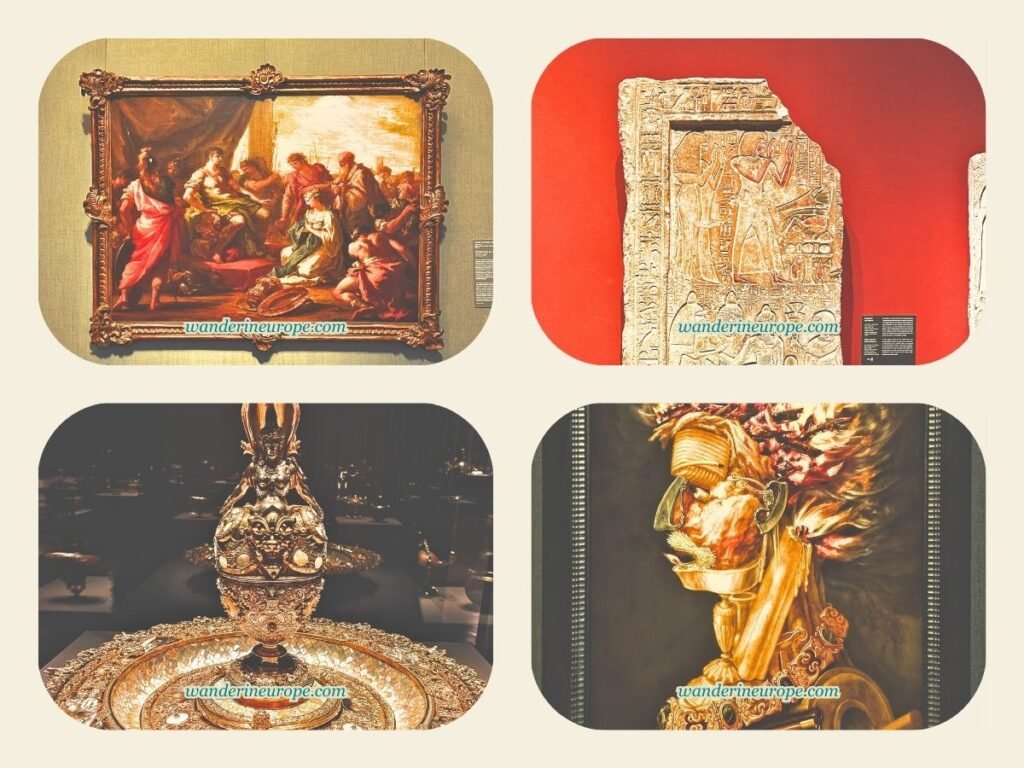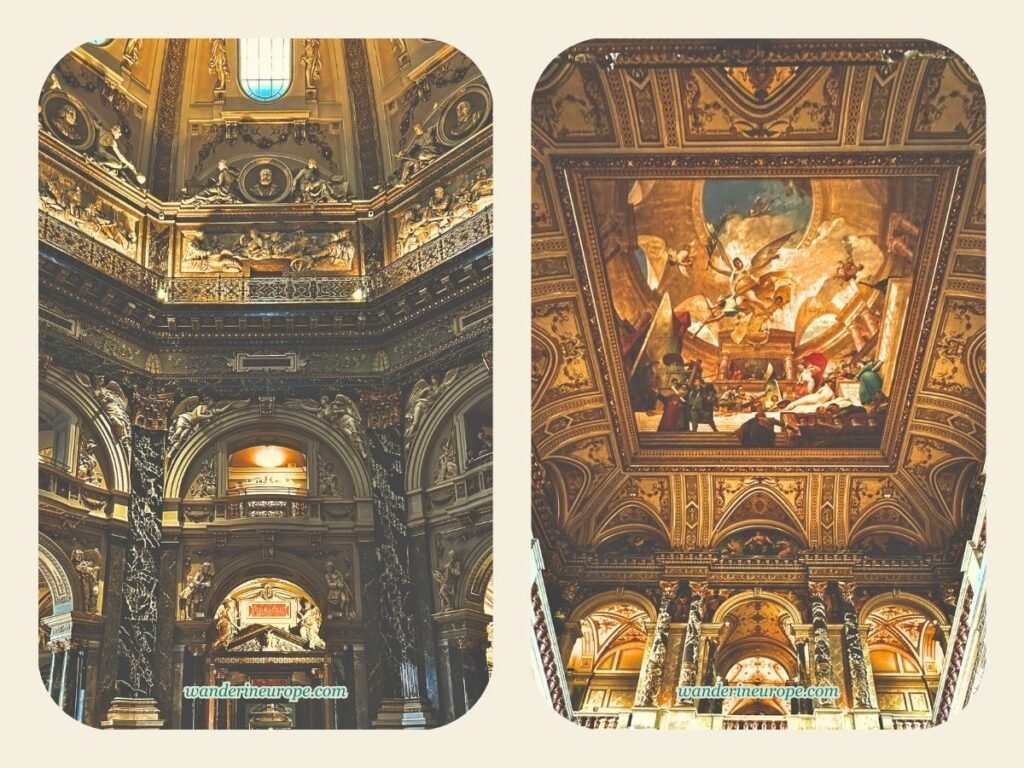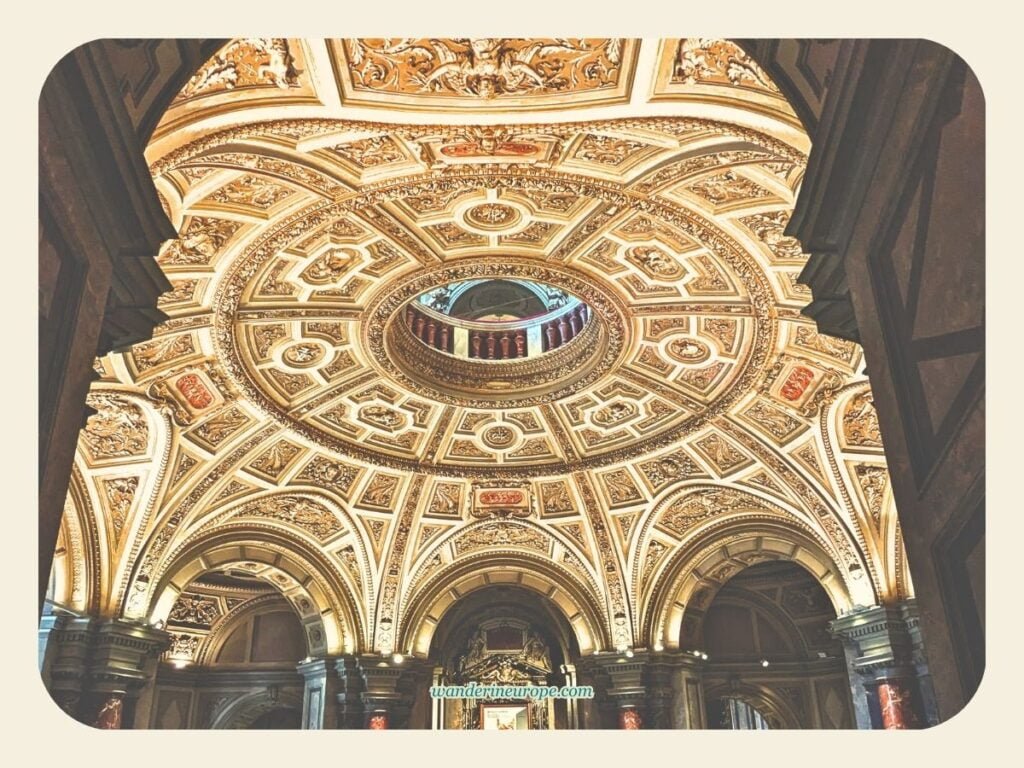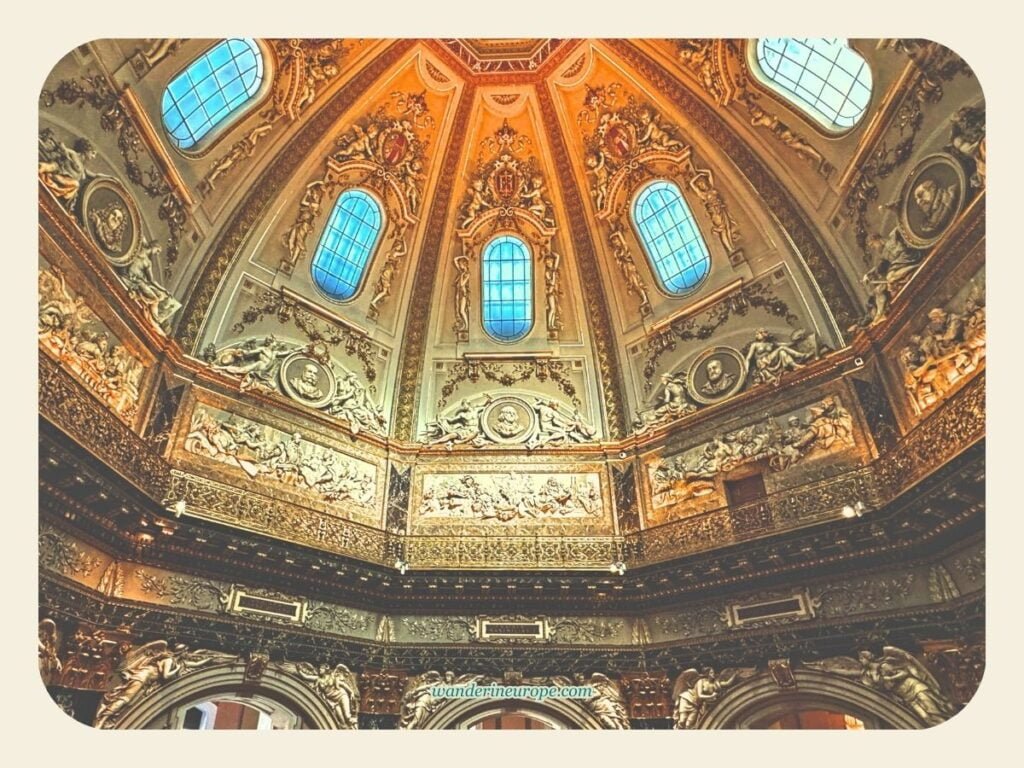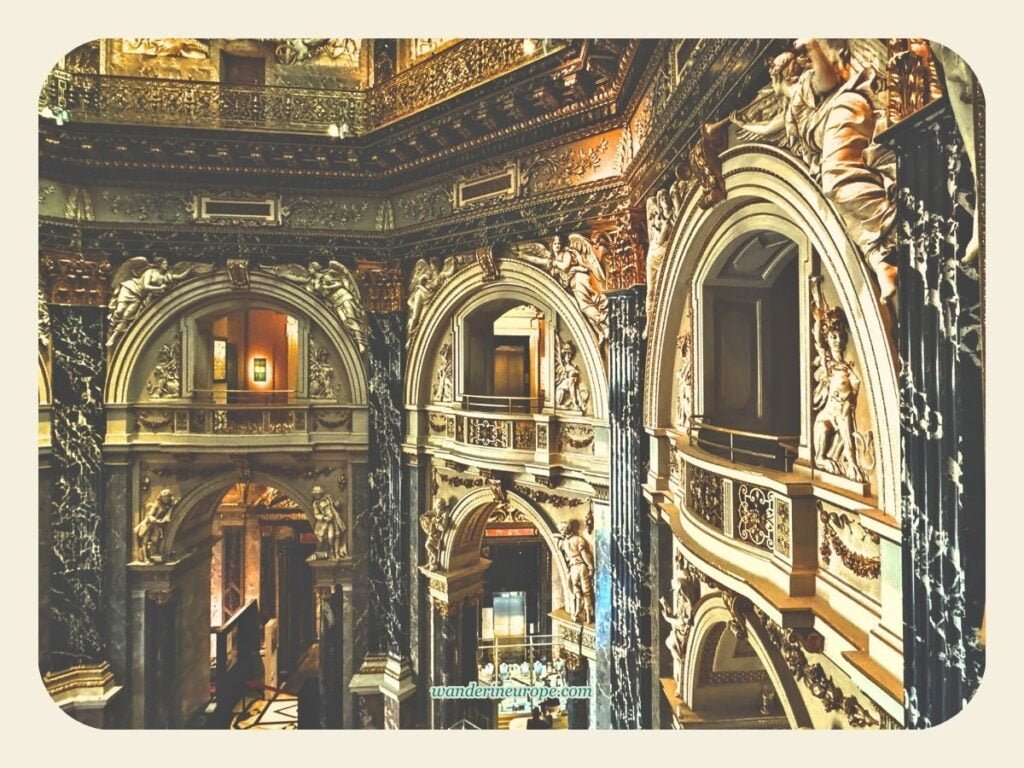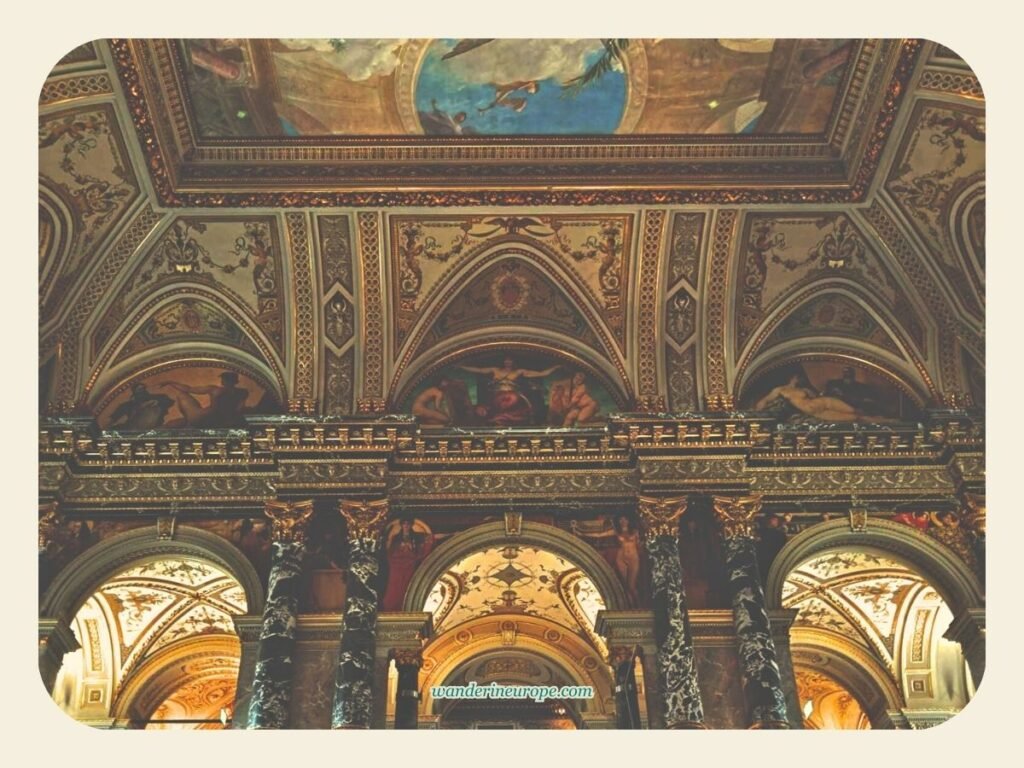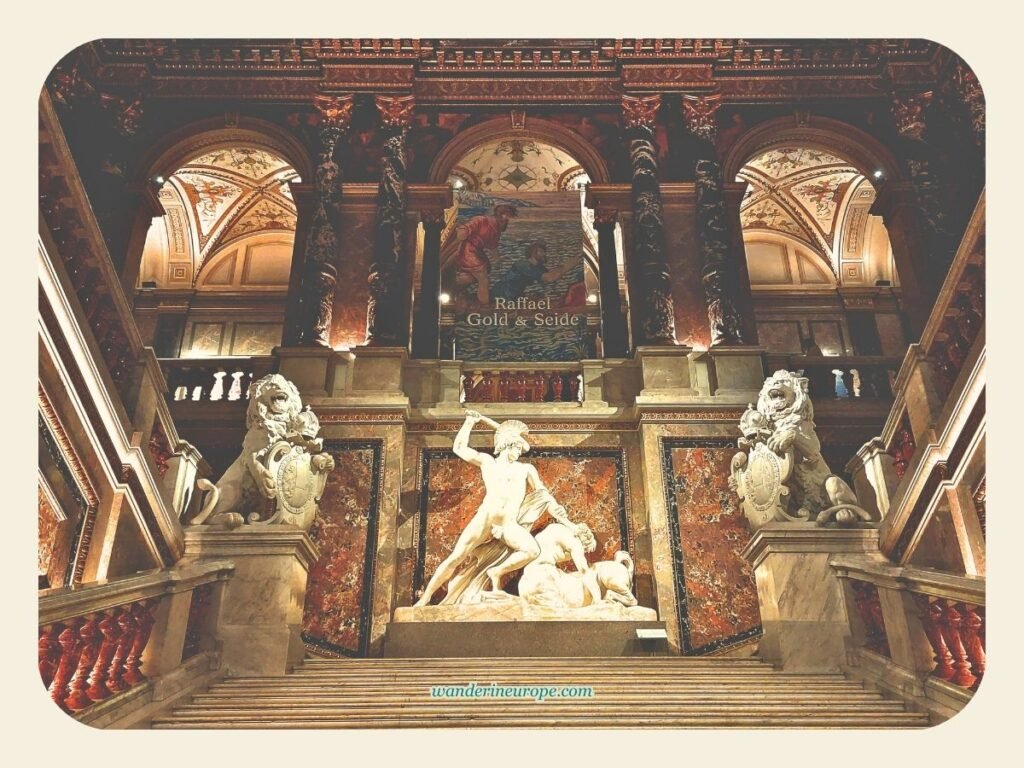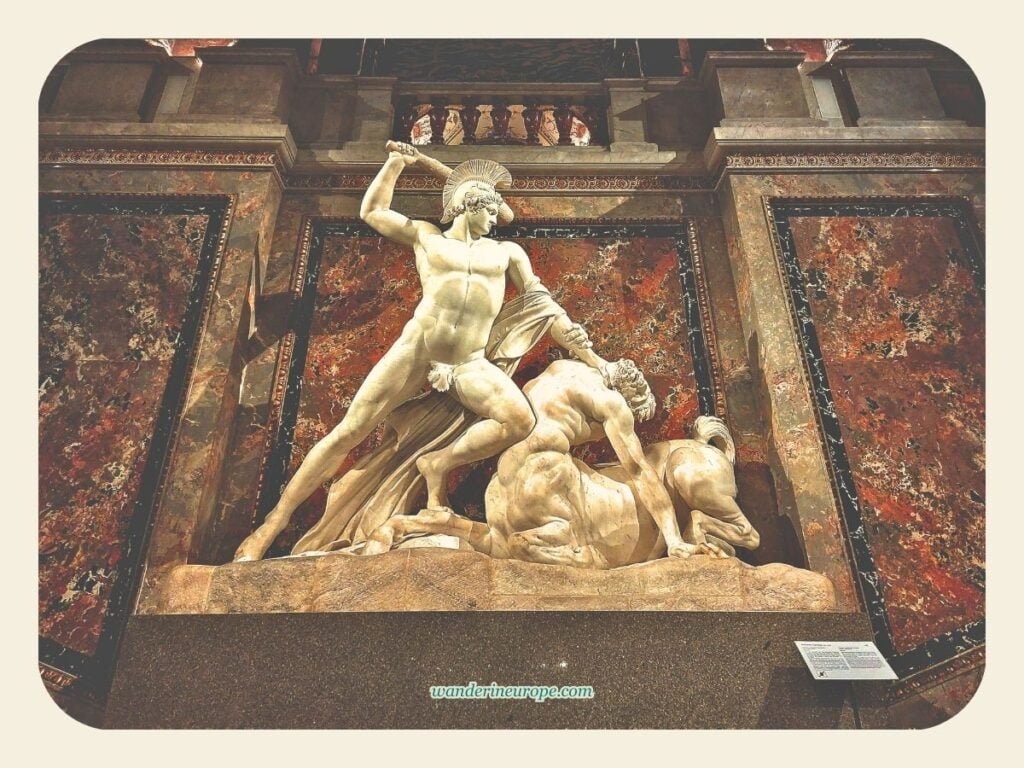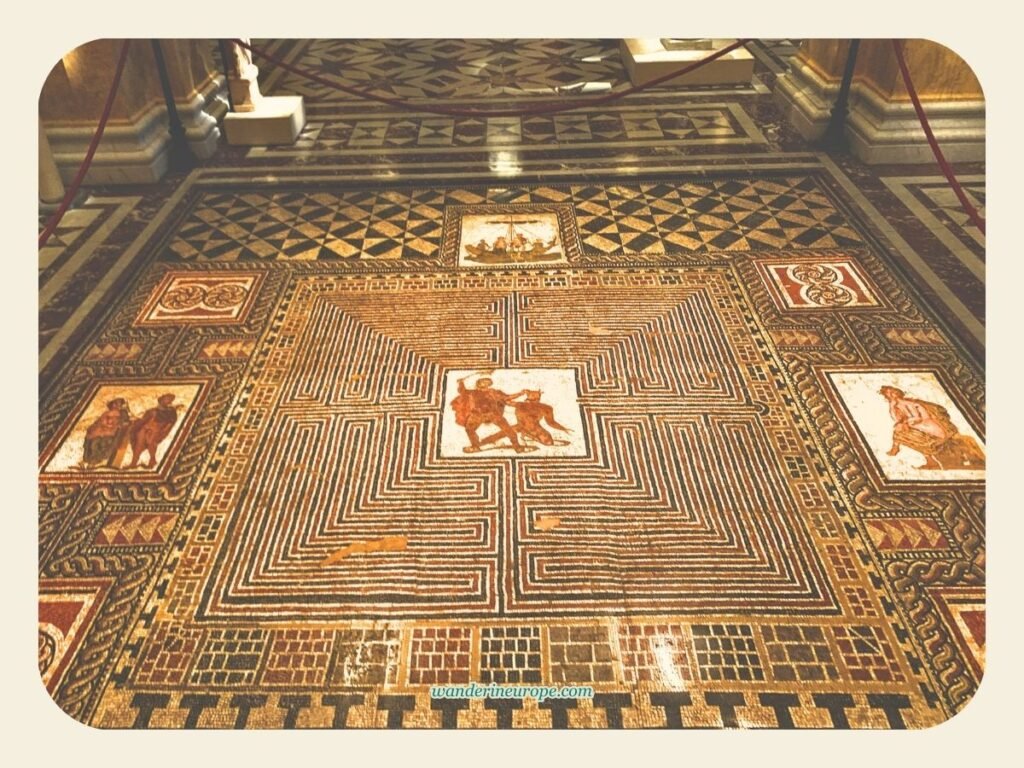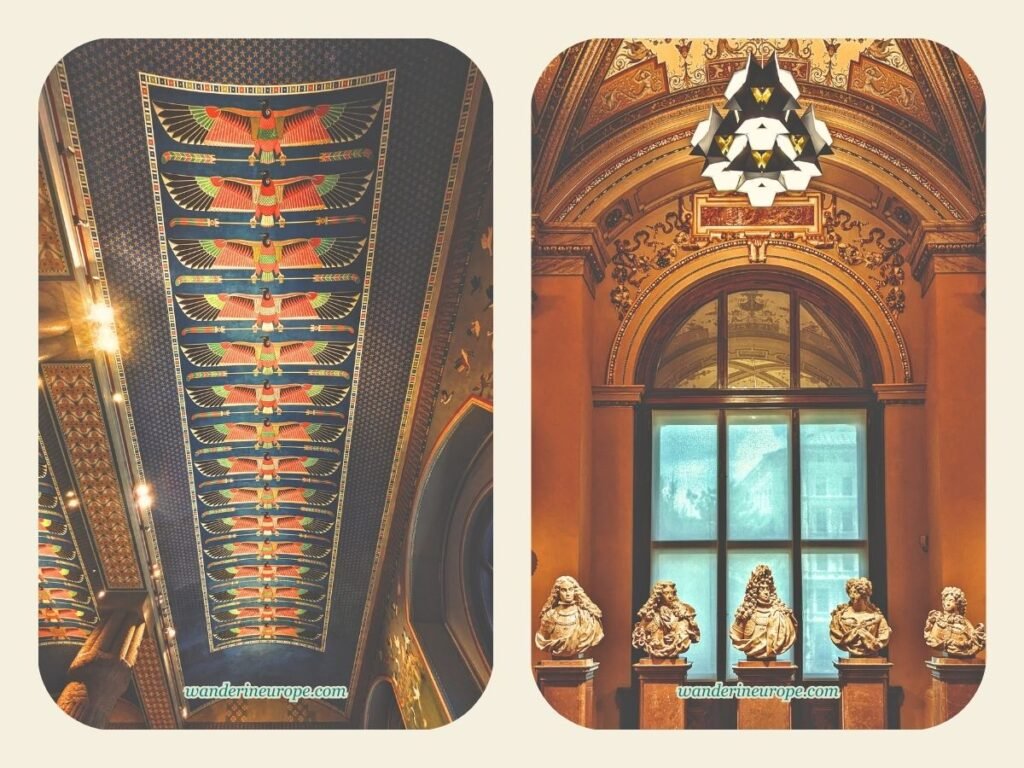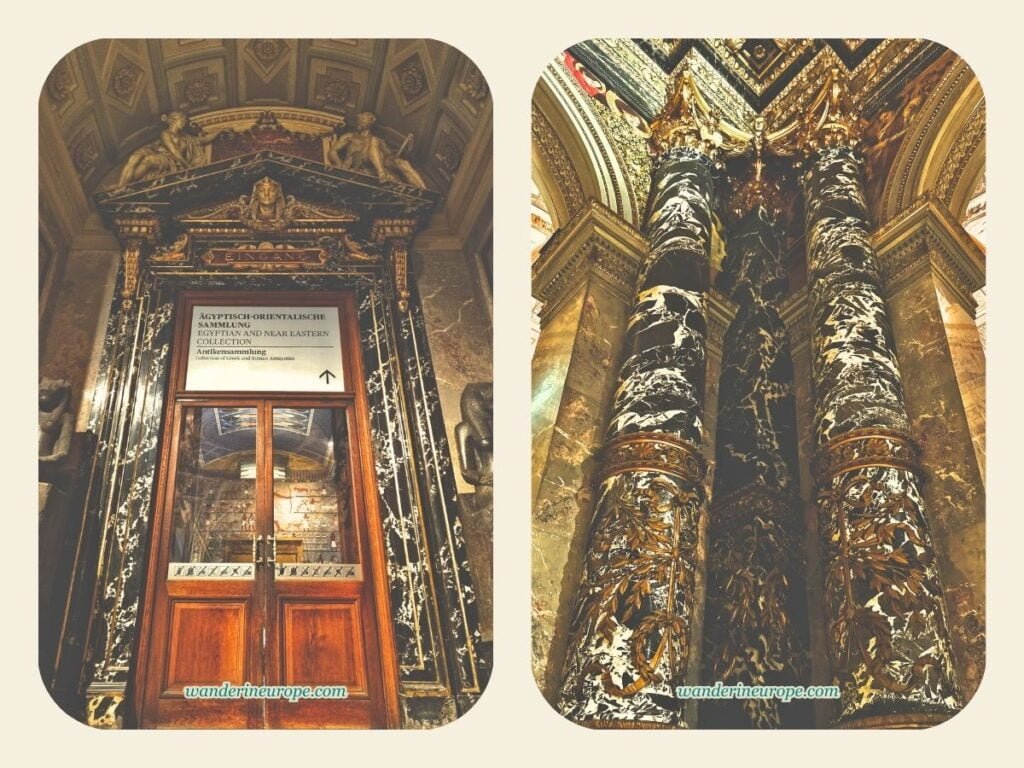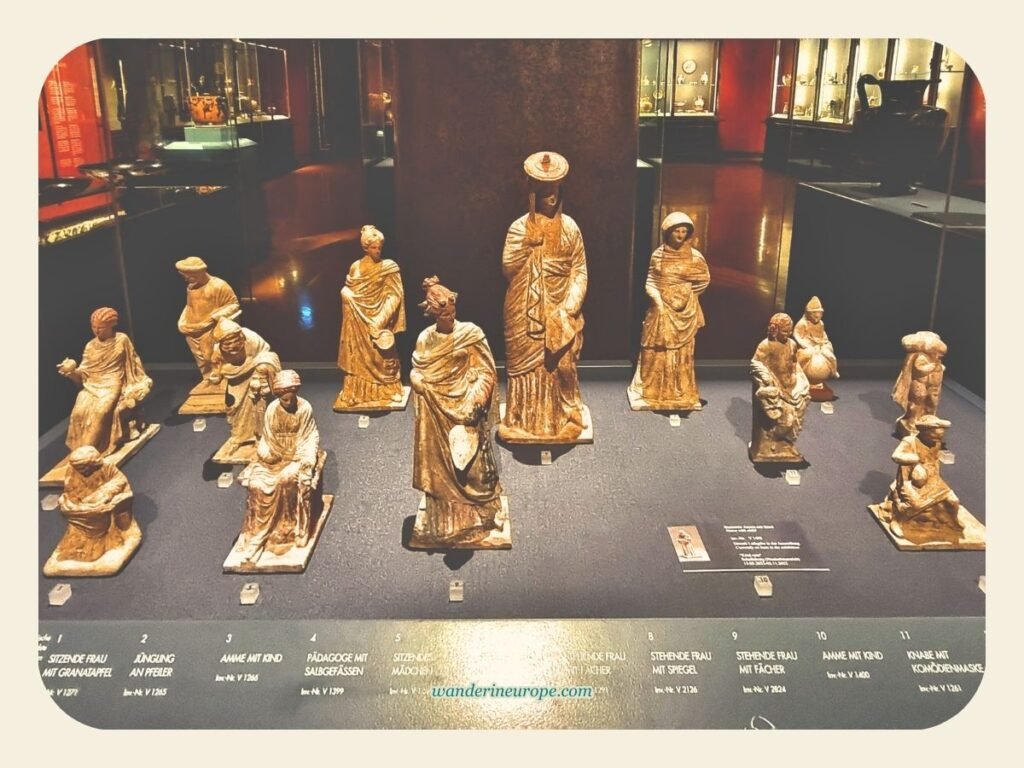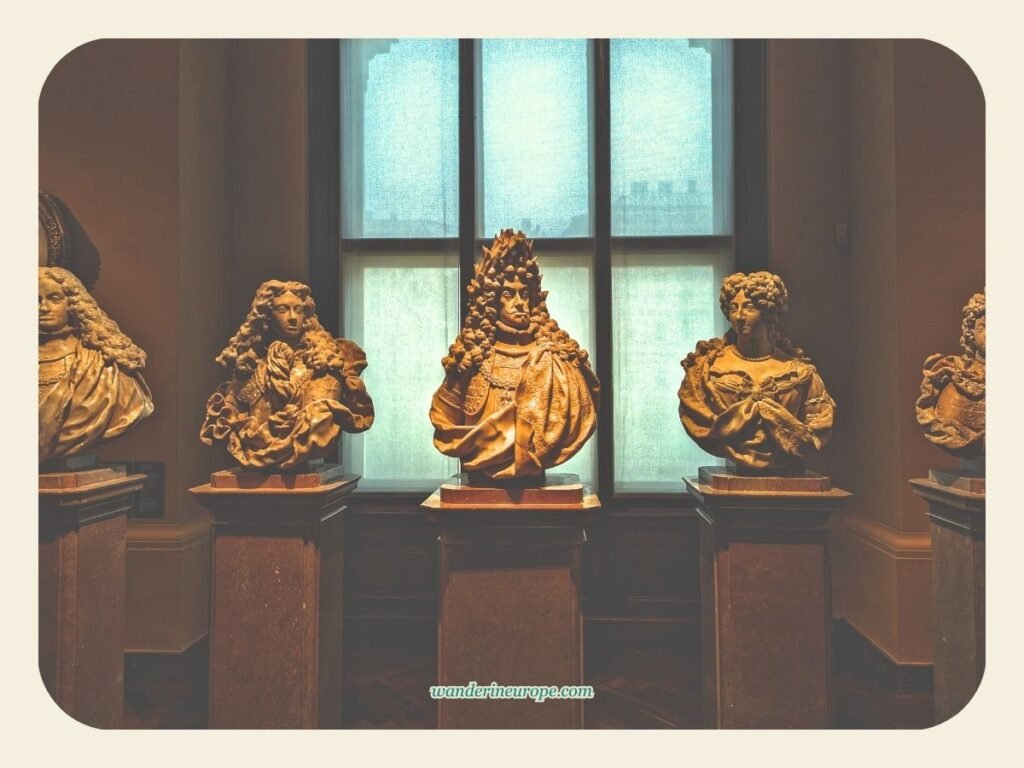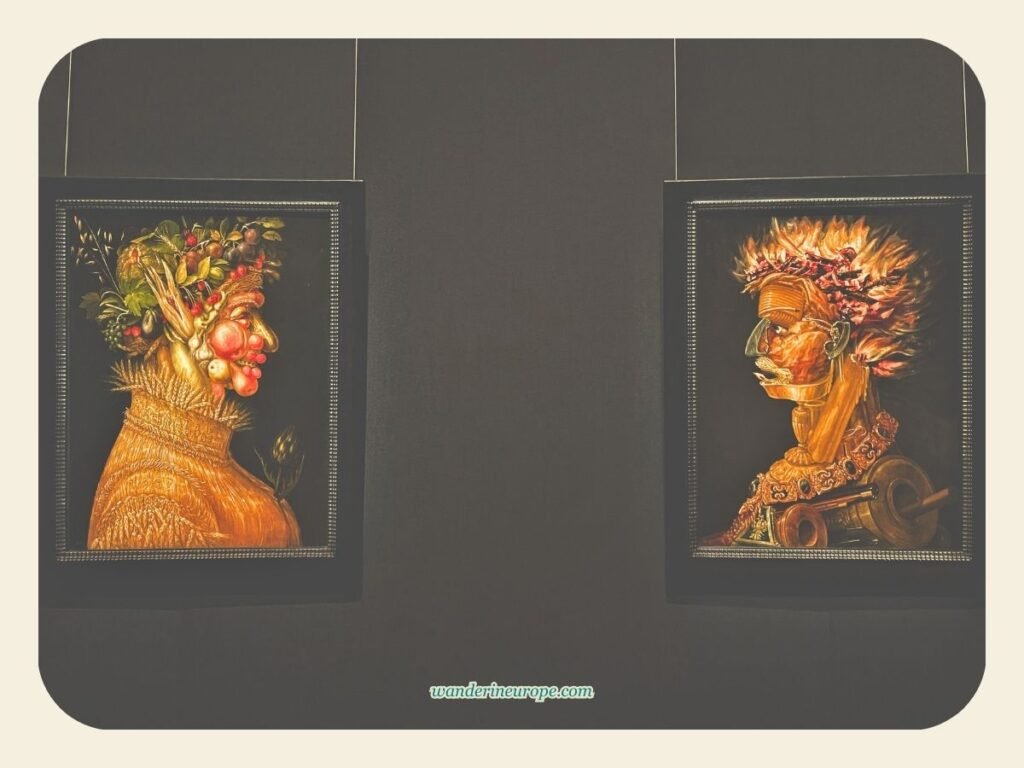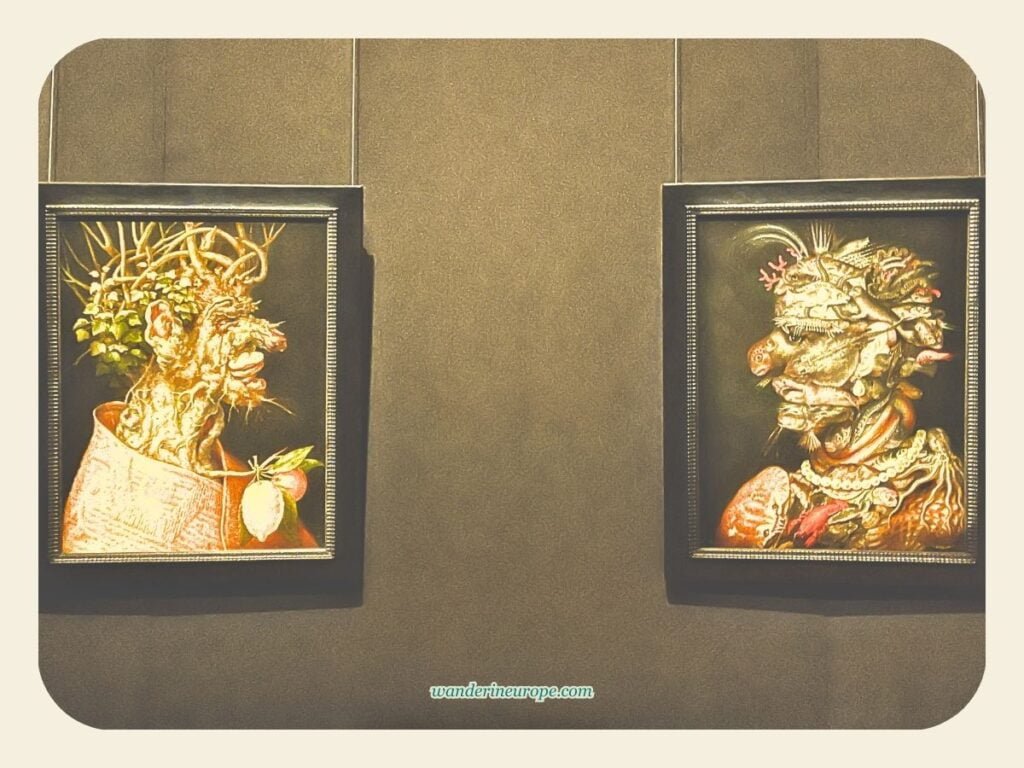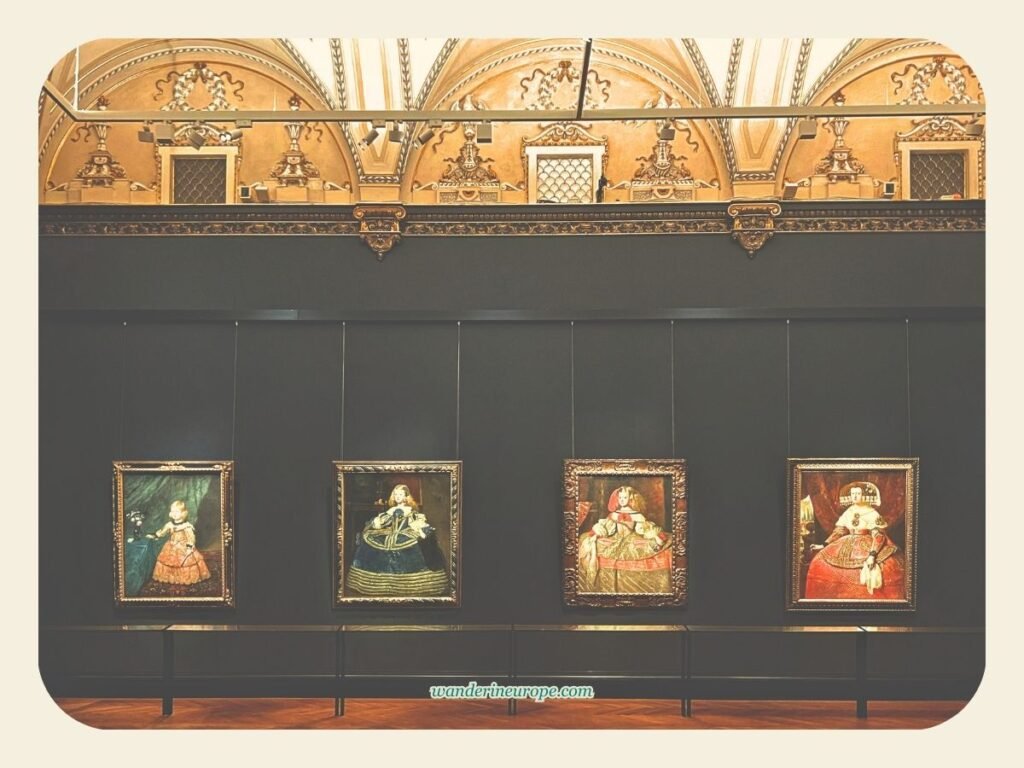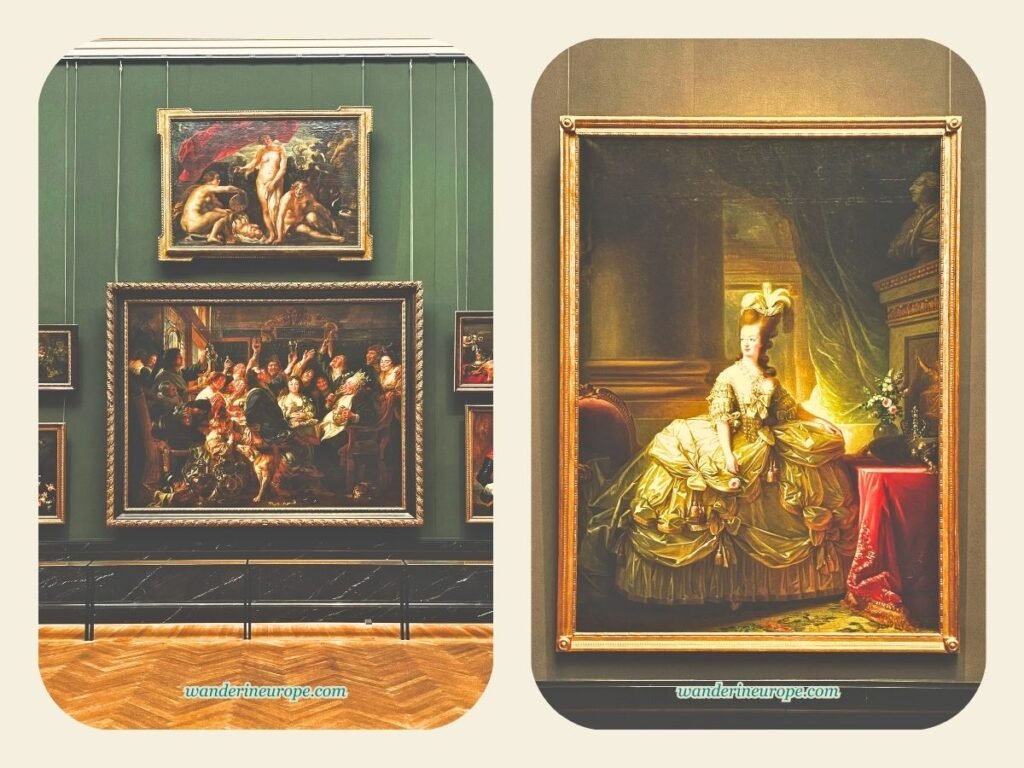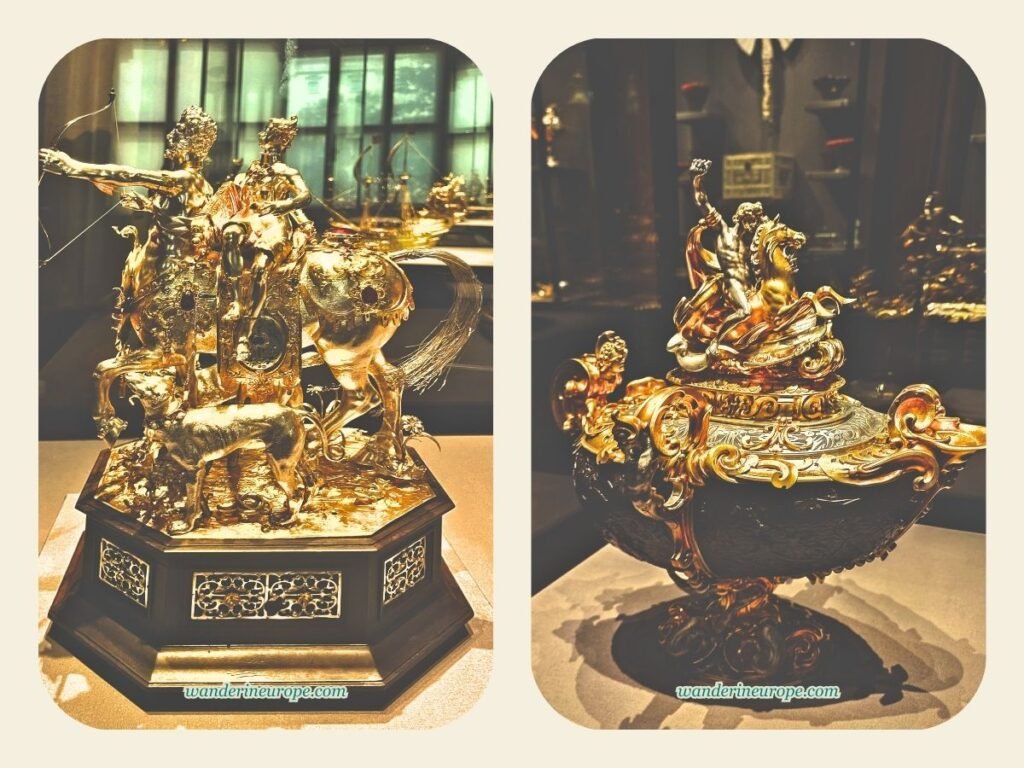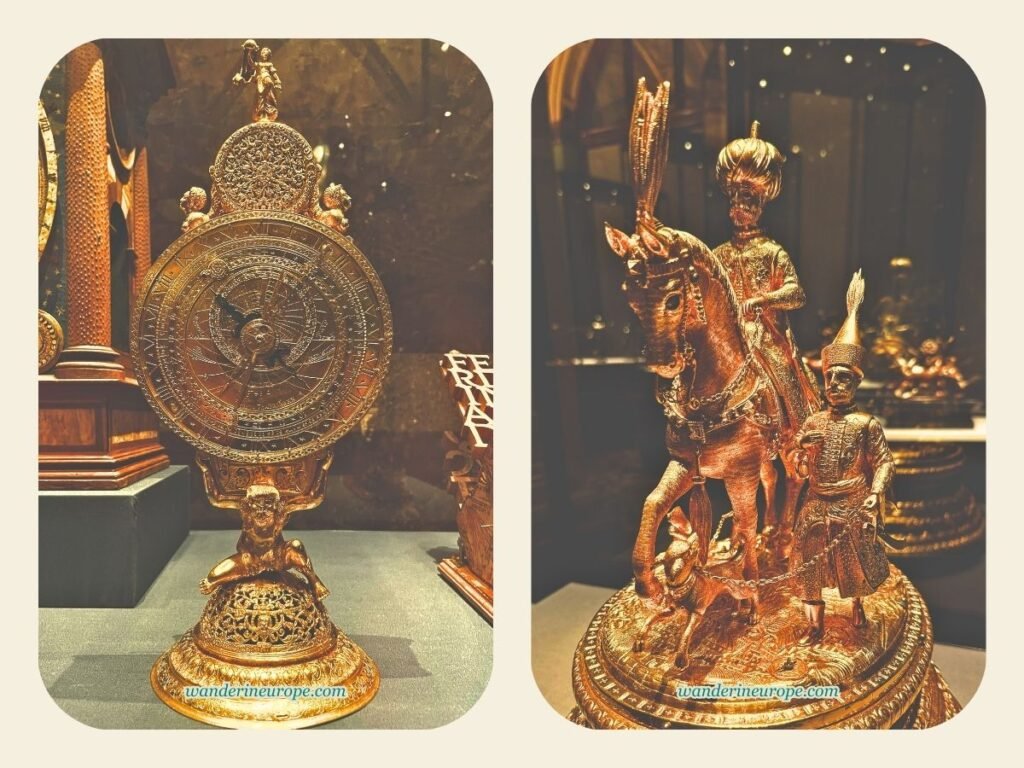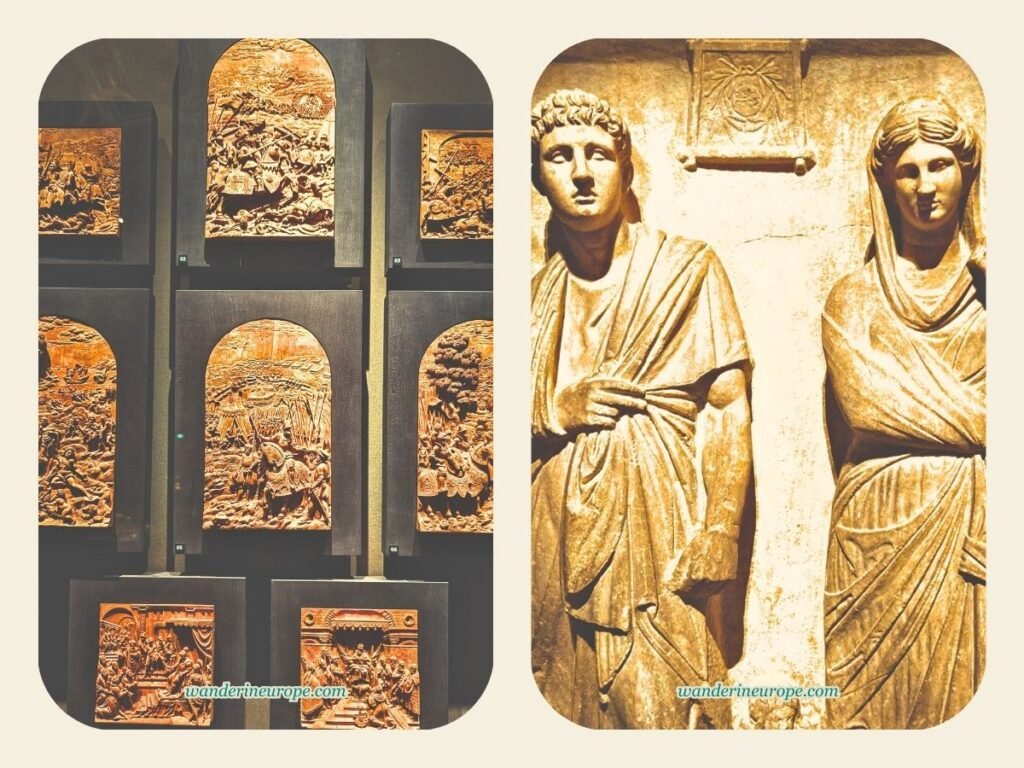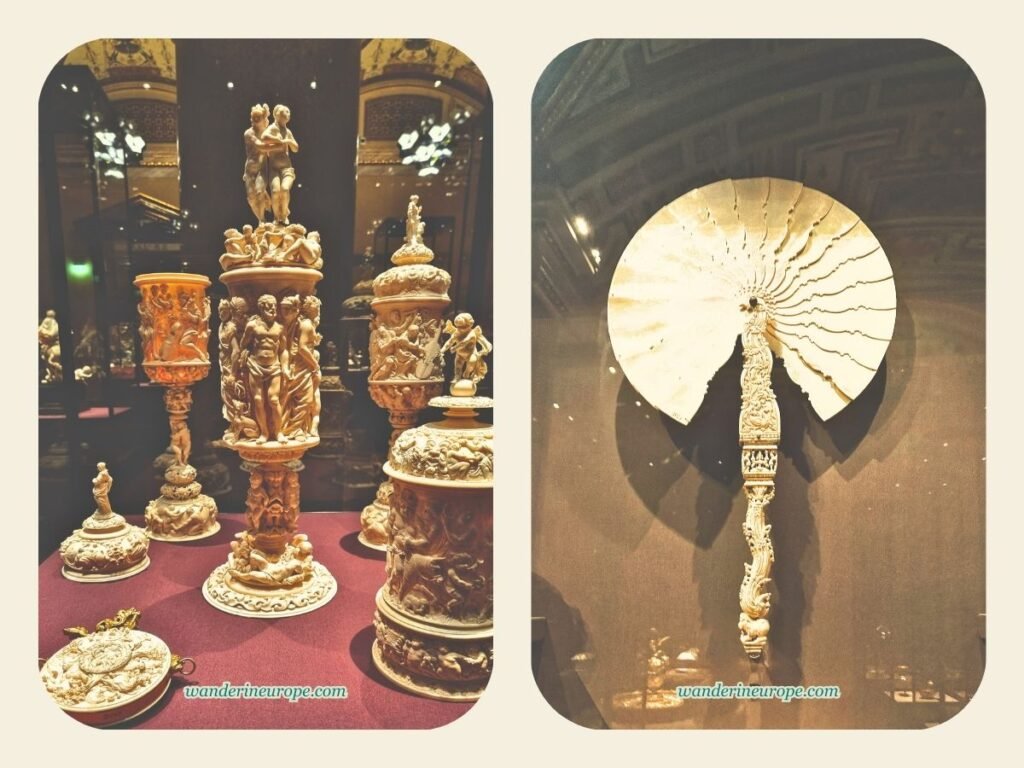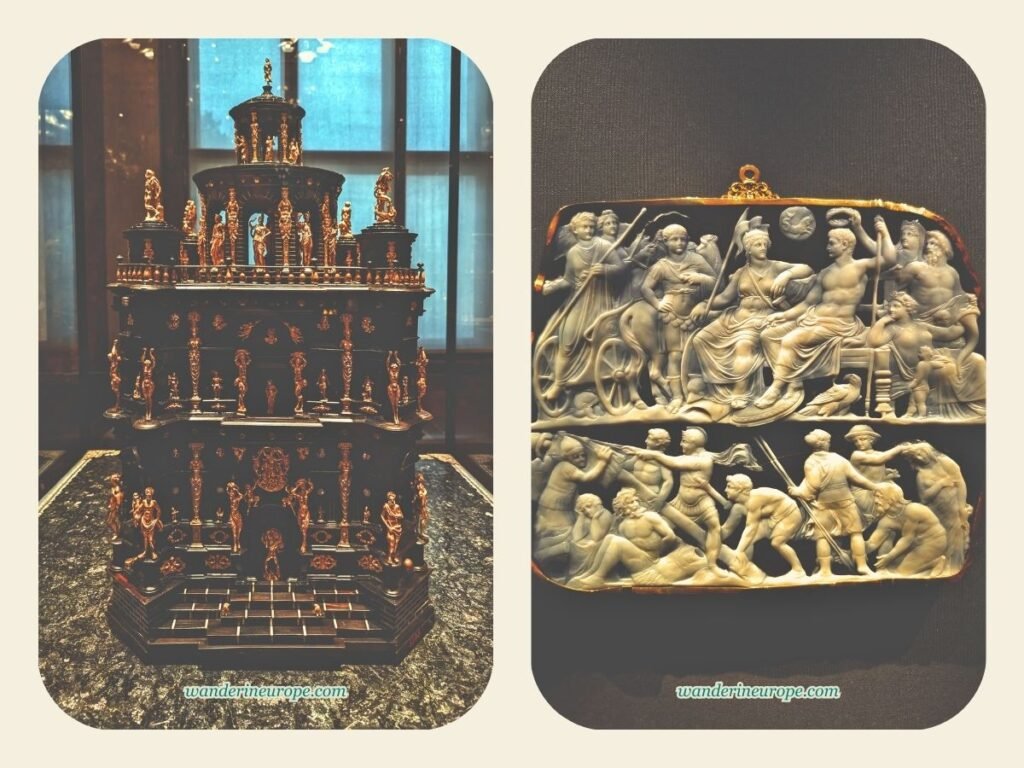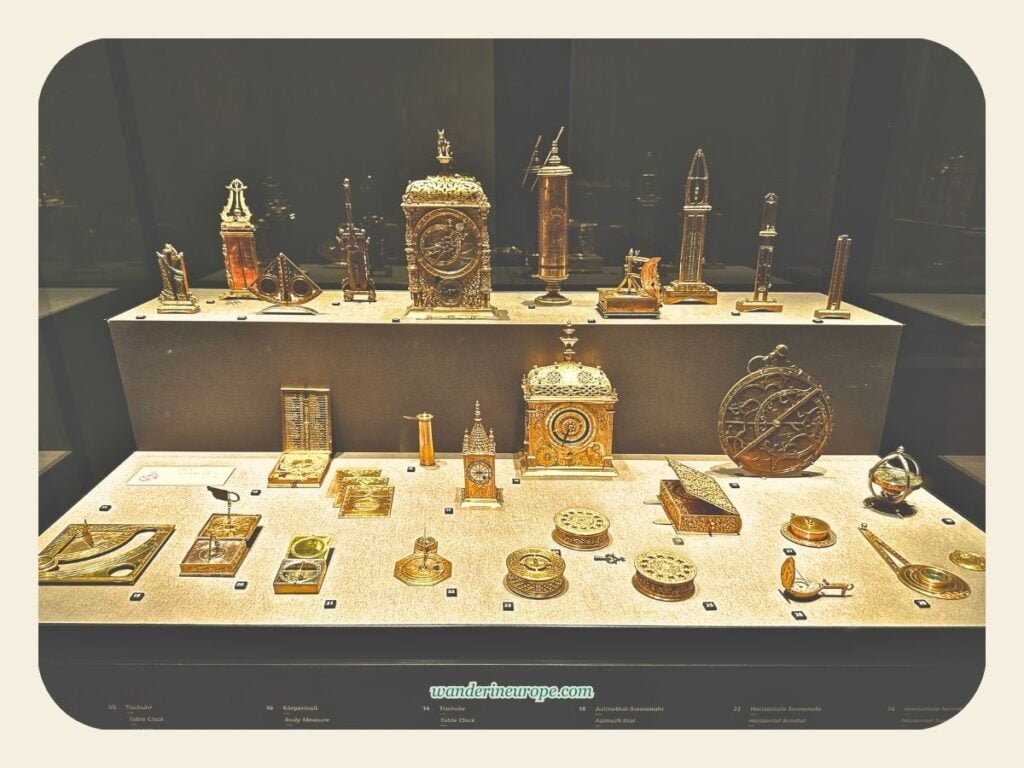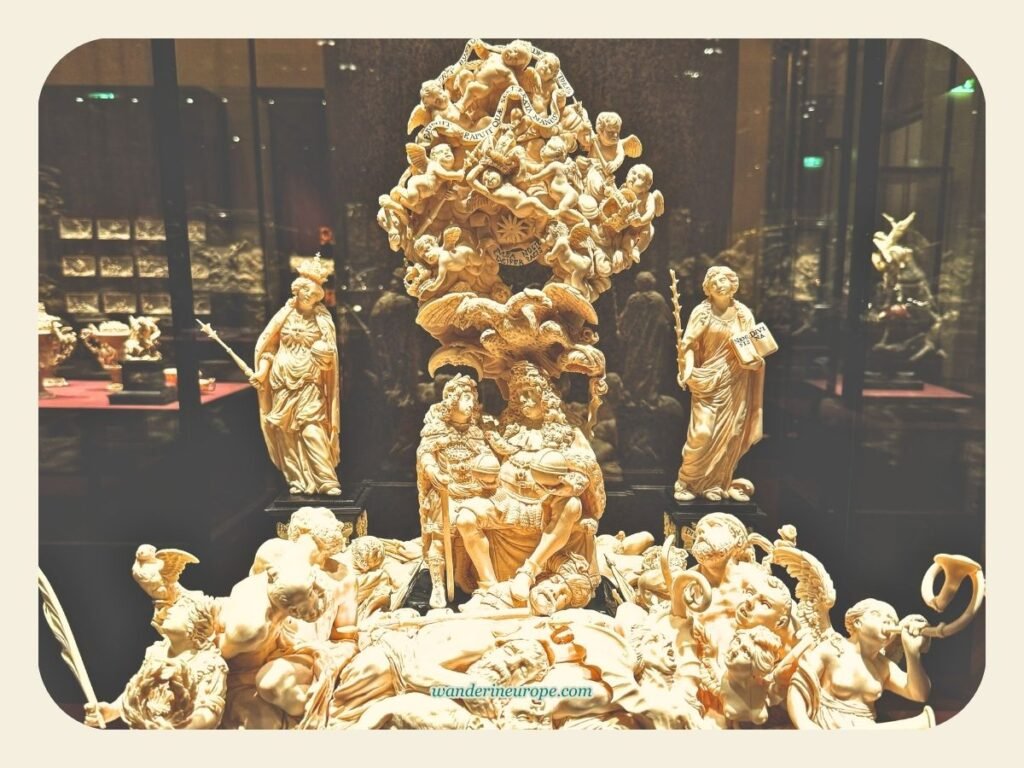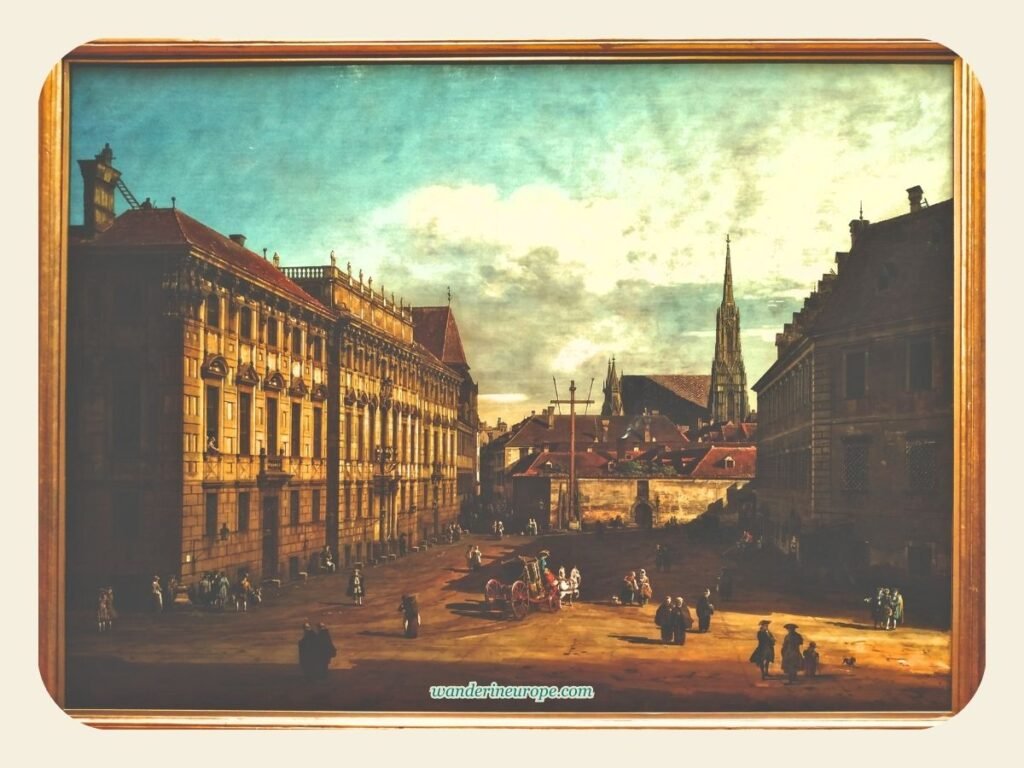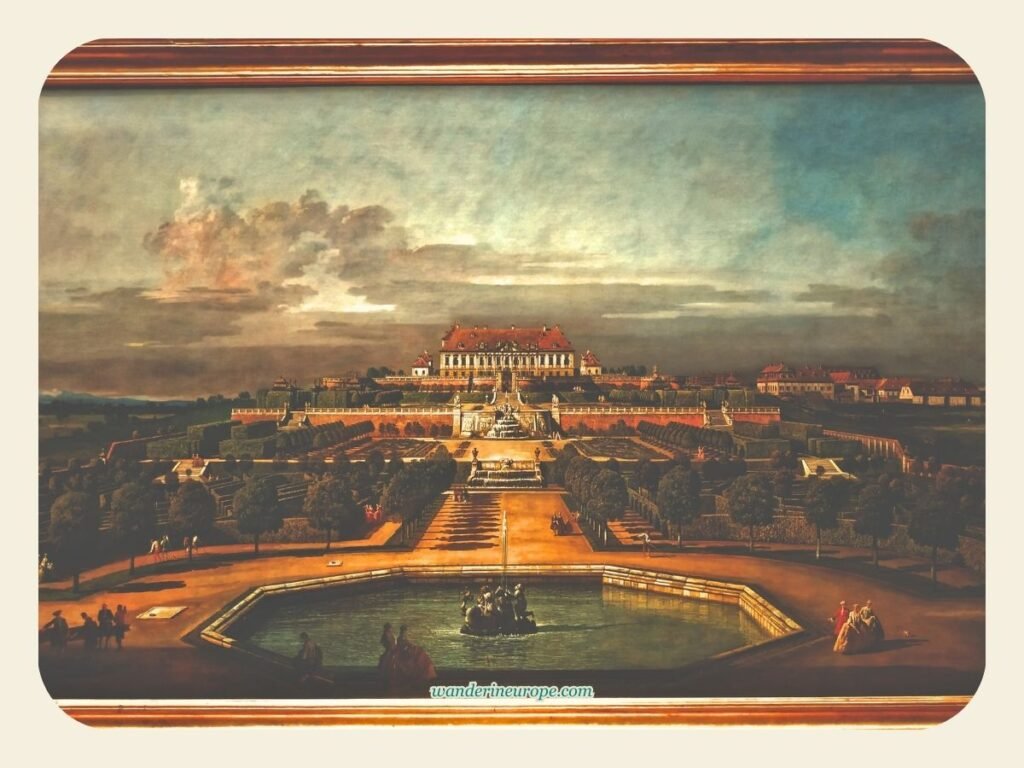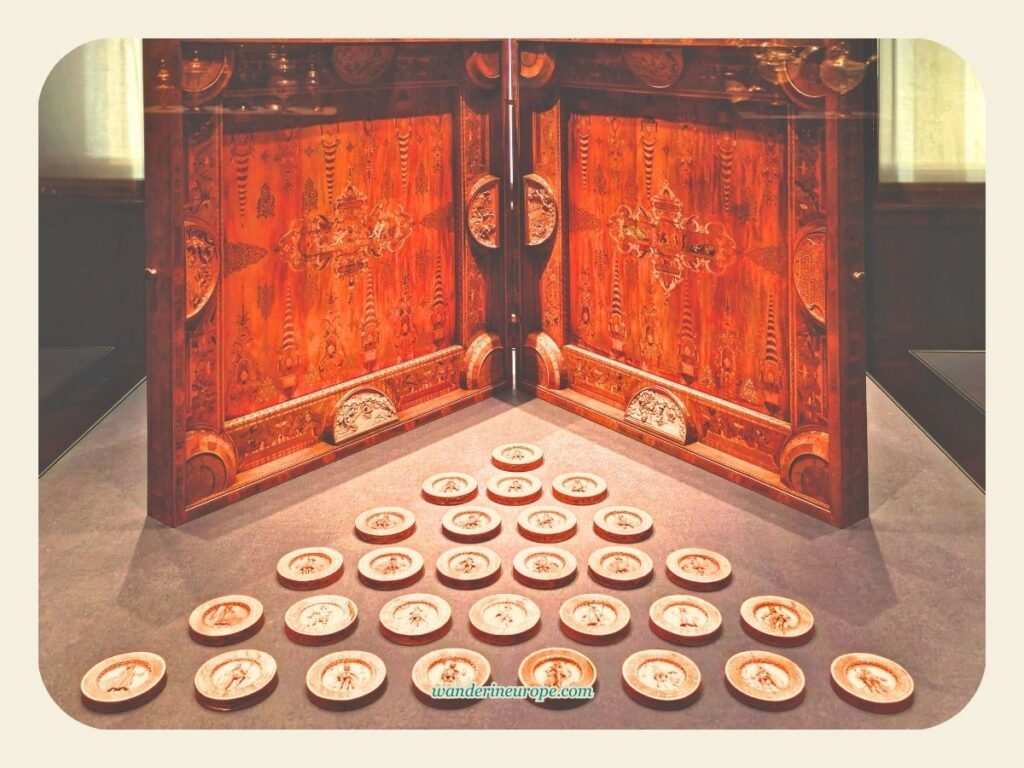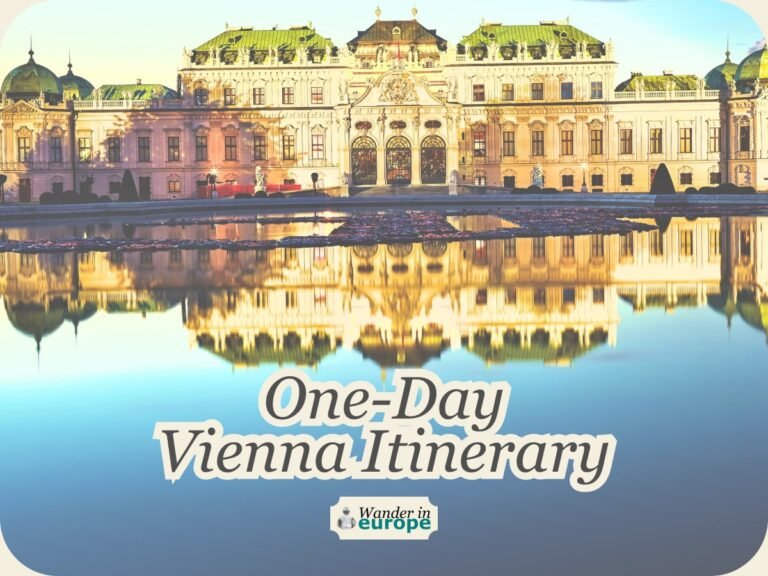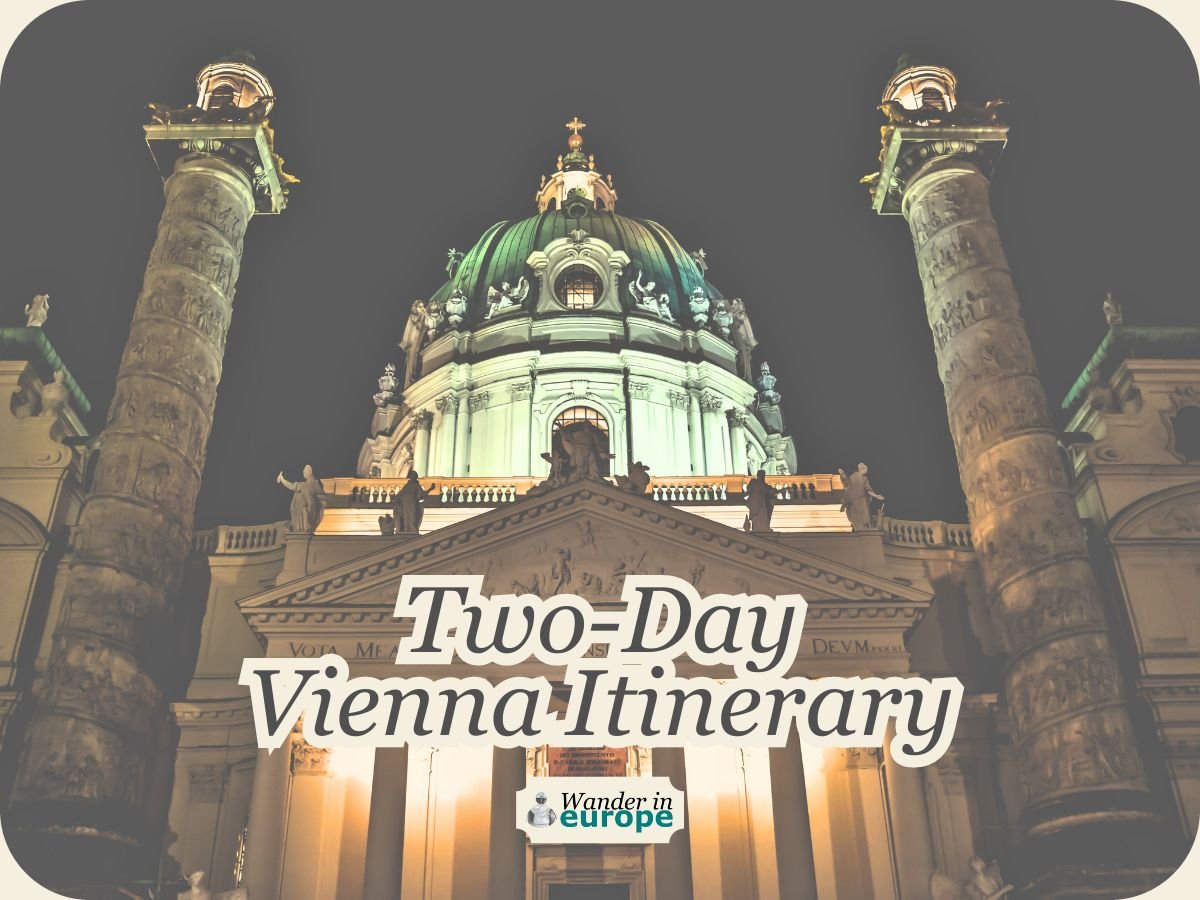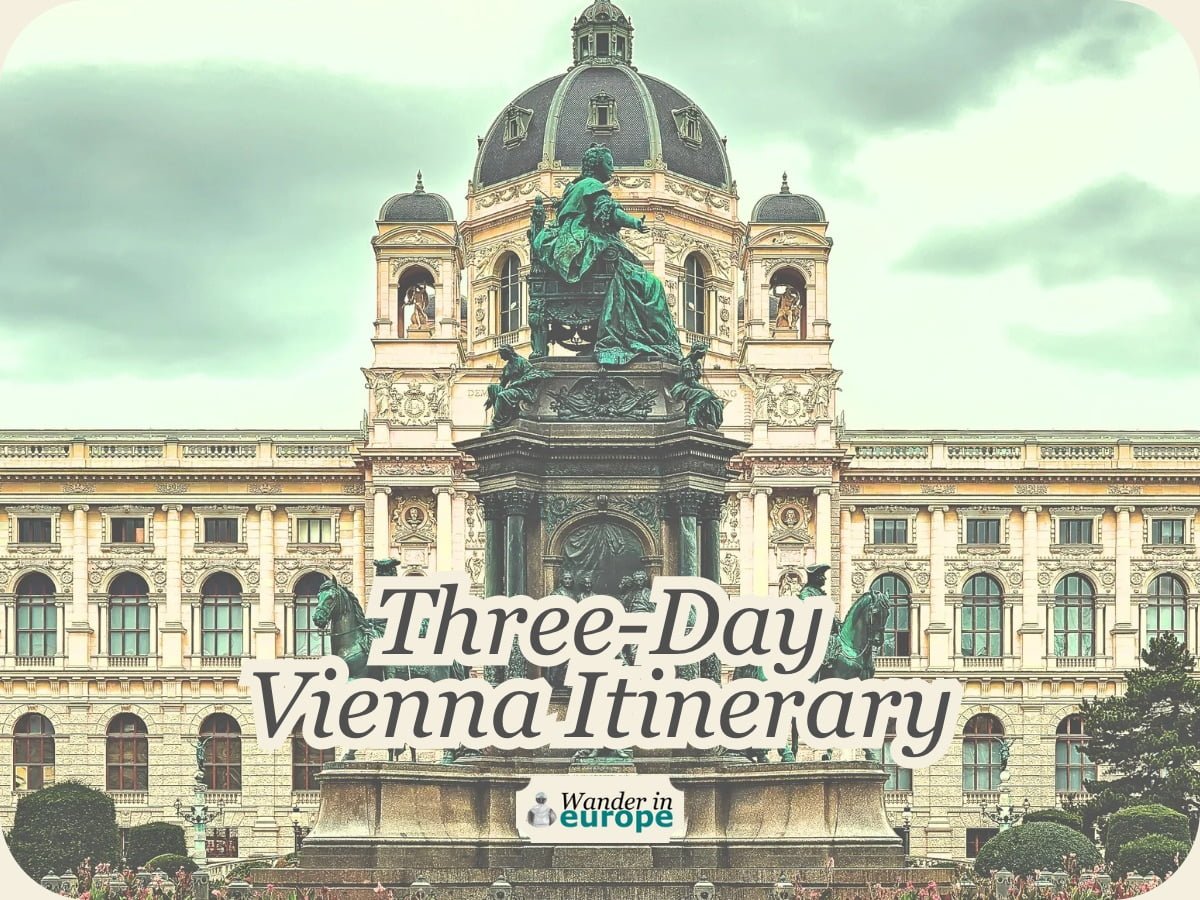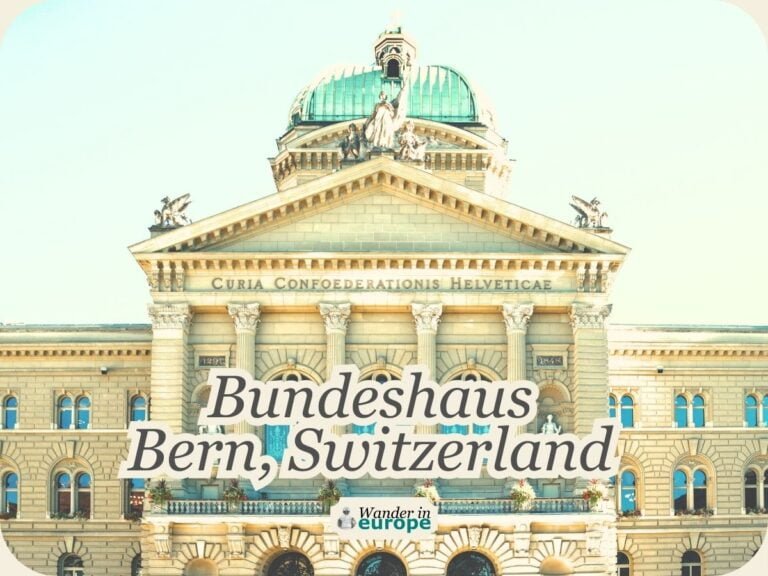Inside Kunsthistorisches Museum Vienna (10 Epic Artworks)
Notes & Disclaimer: (1) Google seems to be having a hiccup. Please use other search engines to find more guides and articles from WanderInEurope. (2) This website is reader supported. And this post might have affiliate links. This means we could earn a small commission if you make a qualifying purchase. No additional cost to you. More info: Disclosure.
I always look forward to visiting mountains and lakes — places that exude peace of mind. Other times, it’s the historical architectural attractions that have a beauty that inspires awe. What about museums? They’re not my priority. However, this isn’t always the case, particularly in culturally rich cities like Vienna.
In my opinion, the museums in Vienna are a must-see! They house very interesting exhibits and the buildings that host these museums are artworks in themselves. Wandering both outside and inside these museums is a wanderer’s happiness! One of the museums in Vienna that I’m describing is the Kunsthistorisches Museum (another is the Museum of Military History). If you find yourself exploring Old Town Vienna or strolling along Ringstrasse, this museum is one of the architectural marvels you’ll see along the way.
Similar to visiting the city’s palaces, such as the Imperial Palace, Schönbrunn Palace, and Belvedere Palace, you can expect that a visit to the Kunsthistorisches Museum will be full of new discoveries and breathtaking moments. Well, that’s thanks to its magnificent interiors! My two cents: this museum is an incredible showcase of art and history — you’ll surely like it, regardless of what type of traveler you might be.
So, let me give you a glimpse of what to anticipate at this museum and offer some advice for your visit, in case you’re considering seeing it firsthand. I’ll also share the artworks that I find most interesting.
A Quick Introduction
The Kunsthistorisches Museum, a center of art and history, is specifically situated on the Burgring section of Vienna’s Ring Road. Its magnificent facade is fully visible from Maria-Theresien-Platz, which is also home to another museum: the Naturhistorisches Museum.
Emperor Franz Joseph I opened it around 1891, with the aim of making the Habsburgs’ formidable art collection accessible to the public. The museum’s primary collections are those of the Habsburgs, particularly from the collections of Ferdinand of Tirol, Emperor Rudolph II, and Archduke Leopold Wilhelm. Notable works in the picture gallery include pieces by Raphael, Caravaggio, and many more. Interestingly, there’s more to the Kunsthistorisches Museum than art. We’ll discover more as we go along.

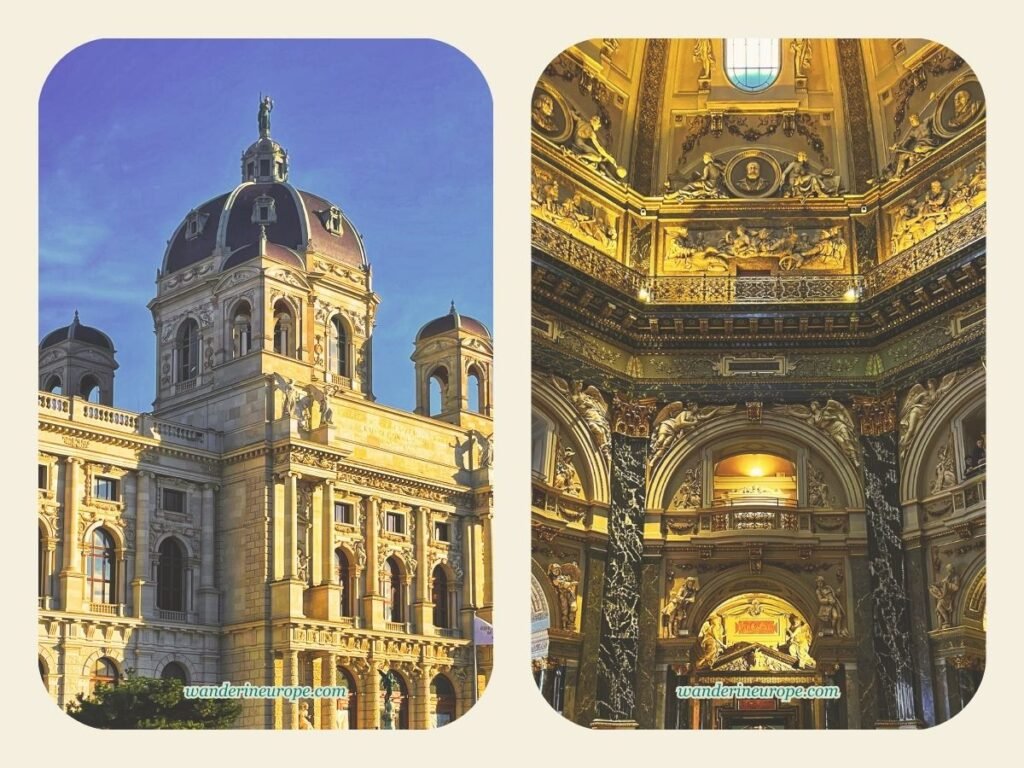

Should You Visit?
Even before I discovered the Kunsthistorisches Museum, I was already aware that Habsburgs collected artifacts from different parts of the world. Thanks to the Weltmuseum Wien, I got so many insights into the extensive relations of the Habsburg family with different cultures. However, I learned that they were more active in collecting artifacts when I explored the Kunsthistorisches Museum. Their collection is amazingly overwhelming.

A glimpse inside Kunsthistorisches Museum

After seeing what’s inside this museum, I think the Kunsthistorisches Museum is surely one of the exceptional museums in the world. And without a doubt, it is Vienna’s museum you’d find worth visiting as quick as the moment you step inside it. I like to emphasize the grandeur of this place. It’ll make you think that you’re visiting a palace instead of an art museum.
Wander into its grandiose rooms and halls and you’ll discover things that you thought exist only in movies. There are Egyptian Mummies, Greek sculptures, Italian Renaissance art, Austrian 16-17th century collections, and so much more.
If you’re planning to visit the Kunsthistorisches Museum, it’s worth spending half a day to see much of it. What’s so nice about this museum is that there are plenty of couches inside the galleries—you can sit comfortably while admiring the artworks. You wouldn’t feel your feet hurting after hours of exploring.
Here’s the different ways to get access to the Kunsthistorisches Museum:
- Vienna Pass (Recommended for a multi-day visit to Vienna)
- Kunsthistorisches Museum Day Admission Ticket
- Combo Ticket: Kunsthistorisches Museum & Imperial Treasury
- Combo Ticket: Kunsthistorisches Museum & Leopold Museum
Inside the Museum
The exhibits of Kunsthistorisches Museum are spread across three floors of the palatial building it is located in and its collections are grouped into five major categories.


More Expectations, Pictures, and Information
#1 Picture Gallery
Among the exhibits, the Picture Gallery is the largest collection. It occupies 30 rooms, which make up almost the entire first floor of the Kunsthistorisches Museum. If I’m not mistaken, the entire northeastern wing of the first floor is dedicated to Dutch, Flemish, and German artworks. The southwestern wing, on the other hand, houses Italian, French, and Spanish artworks.
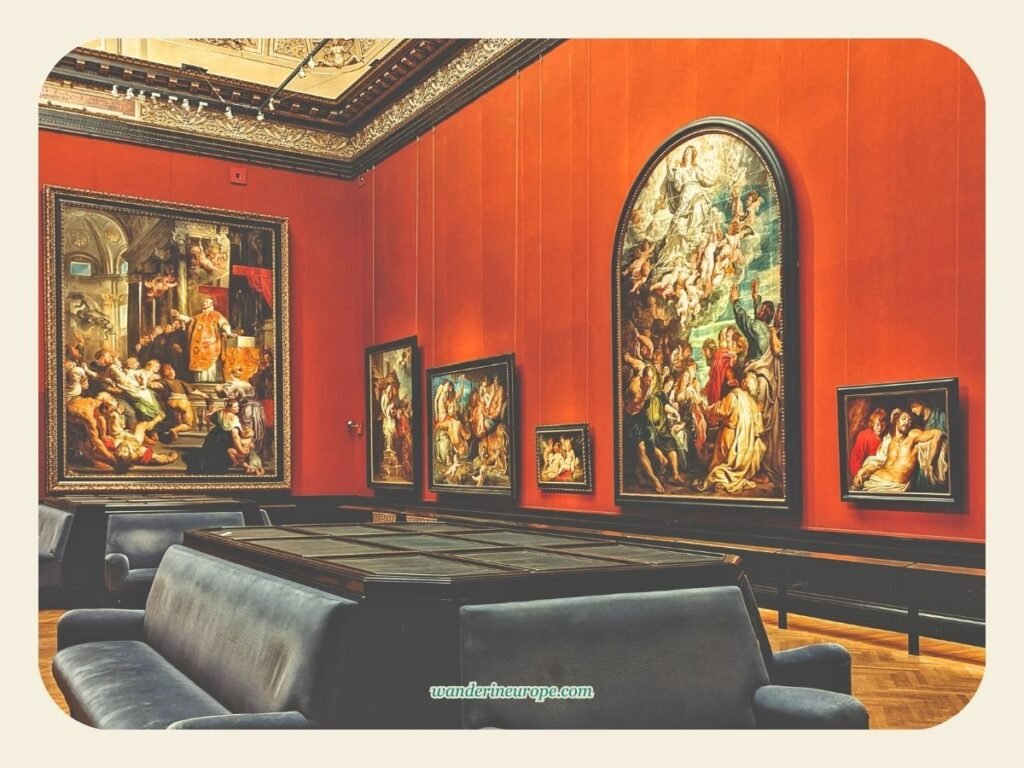
There are so many beautiful paintings. As a Pacific Islander, I was really impressed by how sophisticated Western society was in terms of art, even during times when our society didn’t yet exist. I was intrigued and amazed, from the canvas of naked angels with baby faces from the Middle Ages in Cabinet 3, to the portrait of the last Queen of France, Marie Antoinette, in Room VII, and the painting of the Tower of Babel in Room 10.
Room by room, I gained a deeper admiration for Western civilization, despite all the bad things they did to other cultures during the age of colonization. Some artworks simply fascinated me due to the wild imagination required to create them
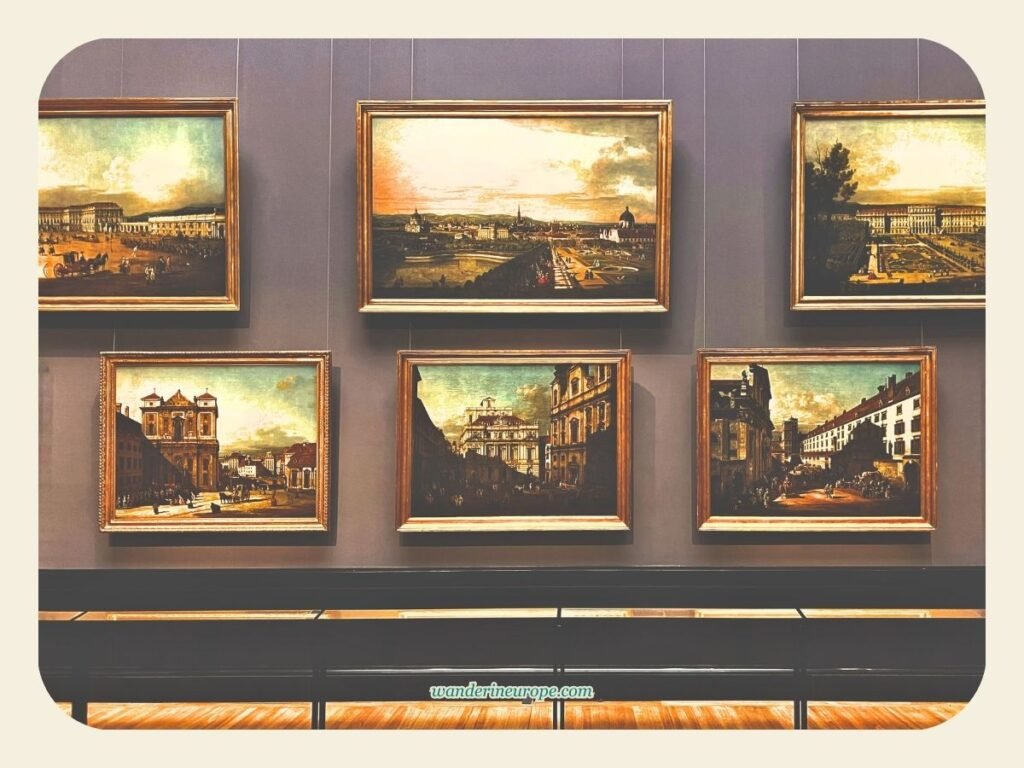
#2 Kunstkammer Wien
Next to the Picture Gallery, the Kunstkammer Wien occupies the most space in the Kunsthistorisches Museum. More than half of the upper ground floor is dedicated to the Kunstkammer Wien, which spans 21 large rooms.
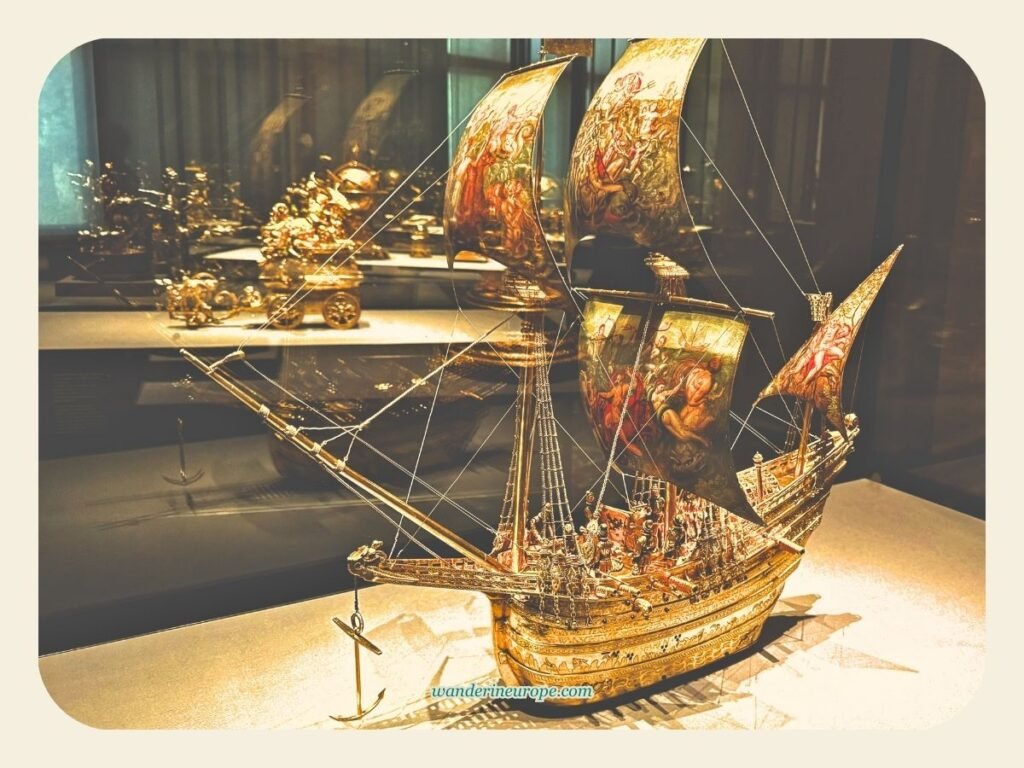
Here, you can find some of the most artistic artifacts and unusual objects that are sure to stimulate your curiosity. From detailed sculptures of saints and tablets depicting biblical stories, to the Viennese crystal clock, a groundbreaking work of precision mechanics from the early 17th century, there’s so much to fascinate. Some of the unusual items that stayed in my memory include a glass designed like a boot, a drinking horn in the form of a dragon, and a figural clock with a sculpture of a girl on horseback.
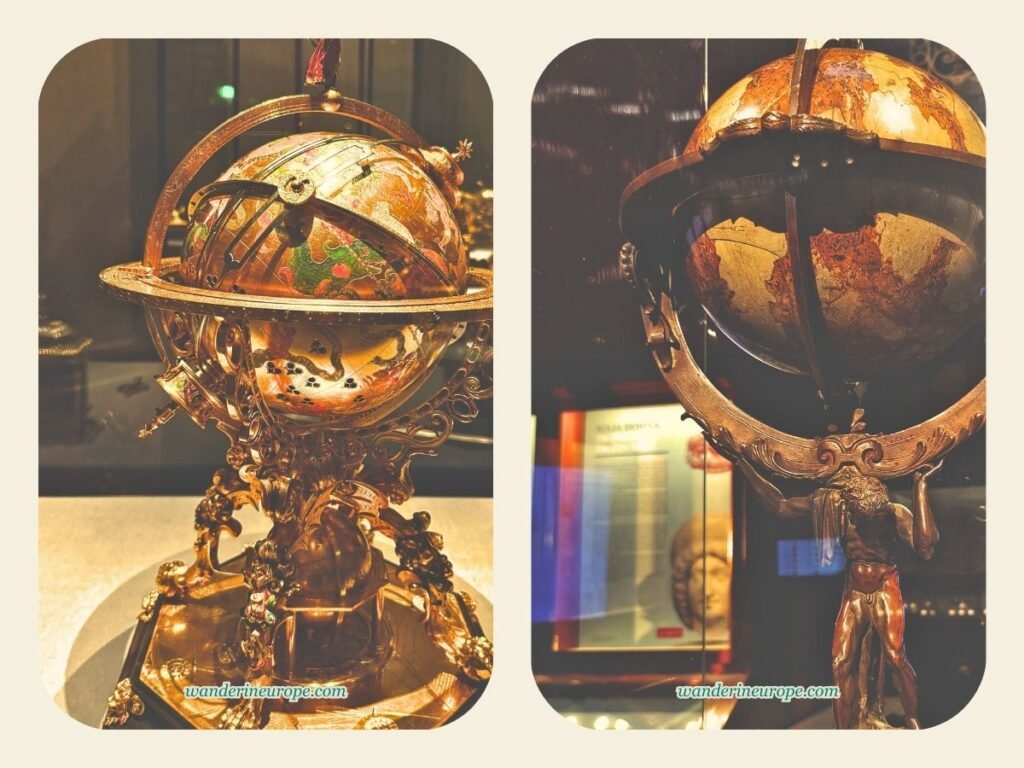
Later, I’ll tell you about all the most amazing things I found in the exhibits, which I think you’d also want to see.
#3 & #4 Egypt-Eastern & Greek-Roman Collections
The antiques and artifacts from Egypt and Near Eastern collections, as well as the Collection of Greek and Roman Antiquities occupy another half of the upper ground floor of the Kunsthistorisches Museum. Overall, there are 25 smaller rooms for these exhibits.
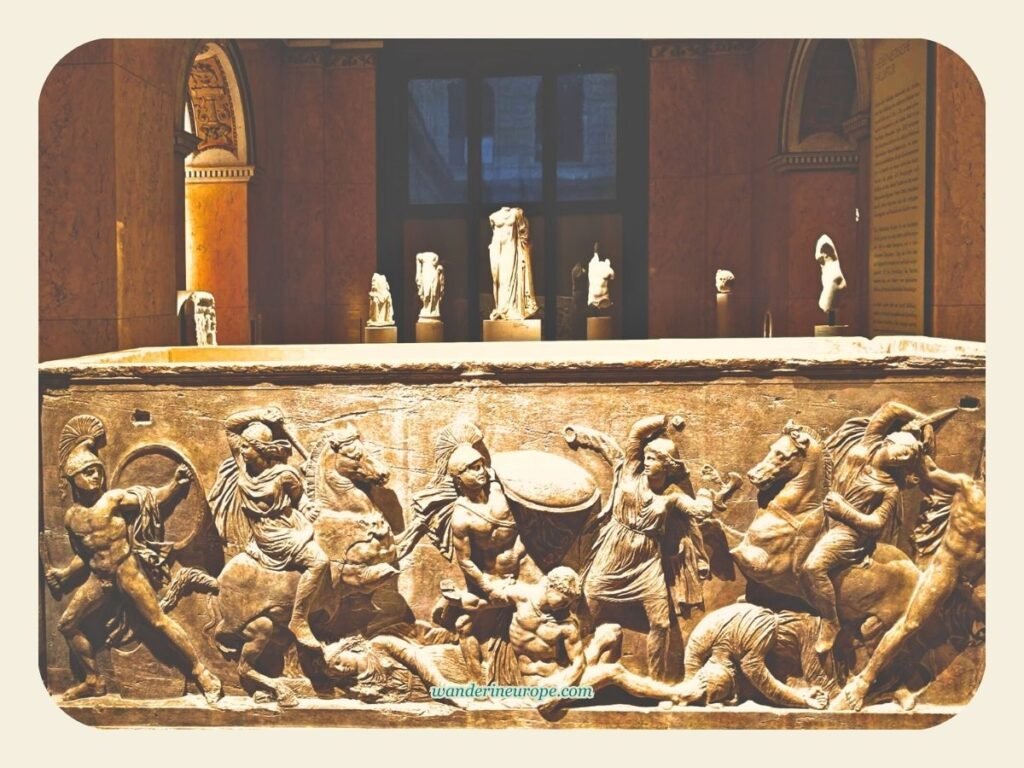
The remaining part of the upper ground floor is then reserved for special exhibitions. If you’re the history-loving type of traveler, these antique collections inside the Kunsthistorisches Museum will be the most exciting part for you.
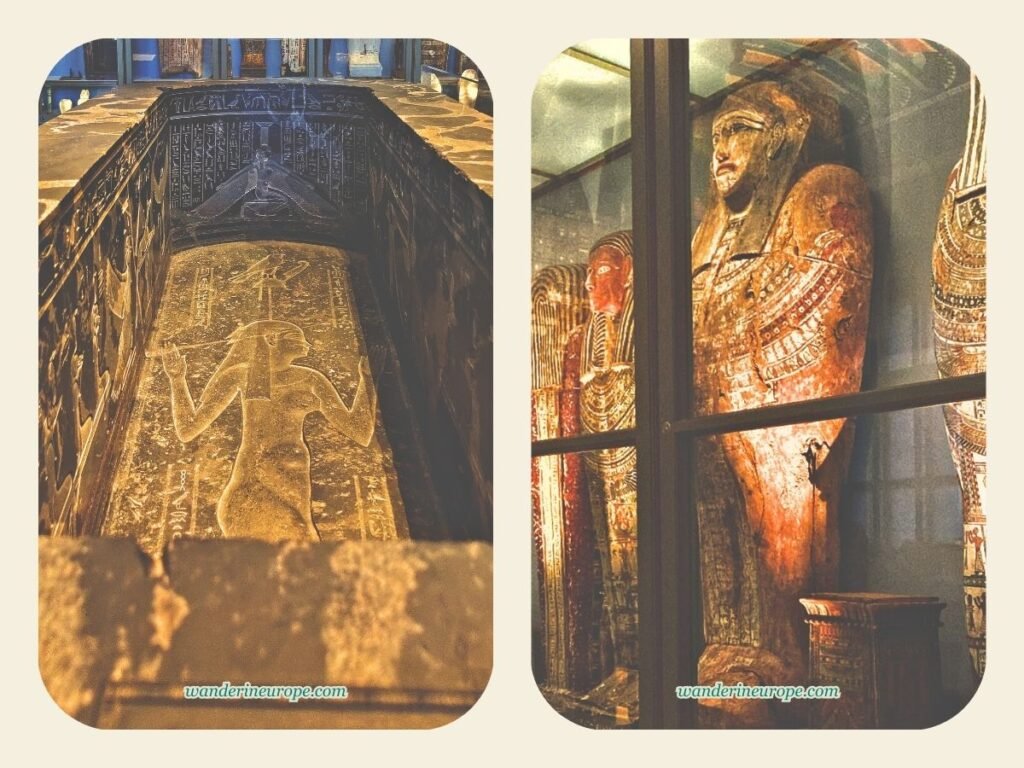
They are the oldest things that you’ll ever see in Vienna. Some even date back more than a millennium before the birth of Christ. You will see several kinds of sarcophagi, sculptures of Egyptian gods, glyphs-filled ancient tablets, and many more noteworthy artifacts. I’m fascinated with the scrolls which contain hand-painted images, intriguingly telling the stories of ancient Egyptians. The detailed sculptures of Greek Gods and sculptures of ancient Romans within these exhibitions are remarkable, too.
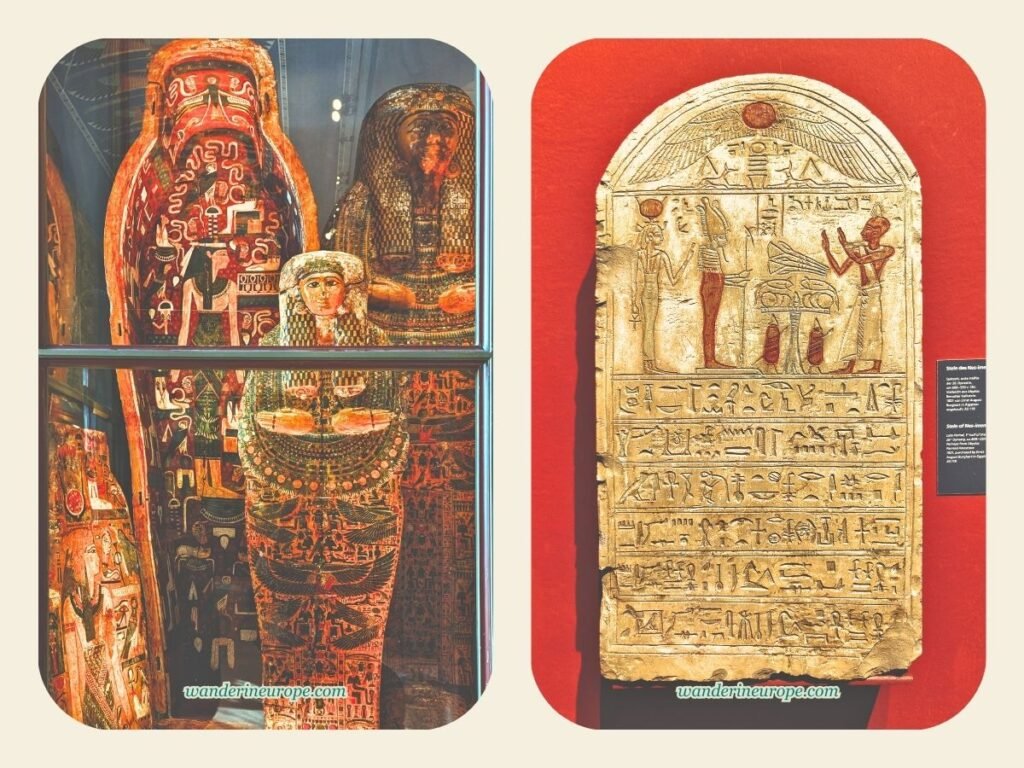
#5 Coin Collection
Two more exhibitions await you on the second floor of the Kunsthistorisches Museum: the Coin Collection and the Umgang (I’m not exactly sure of its exact name). Compared to the collections located on the lower floors of the museum, you’ll spend less time here. They are contained within just four rooms.
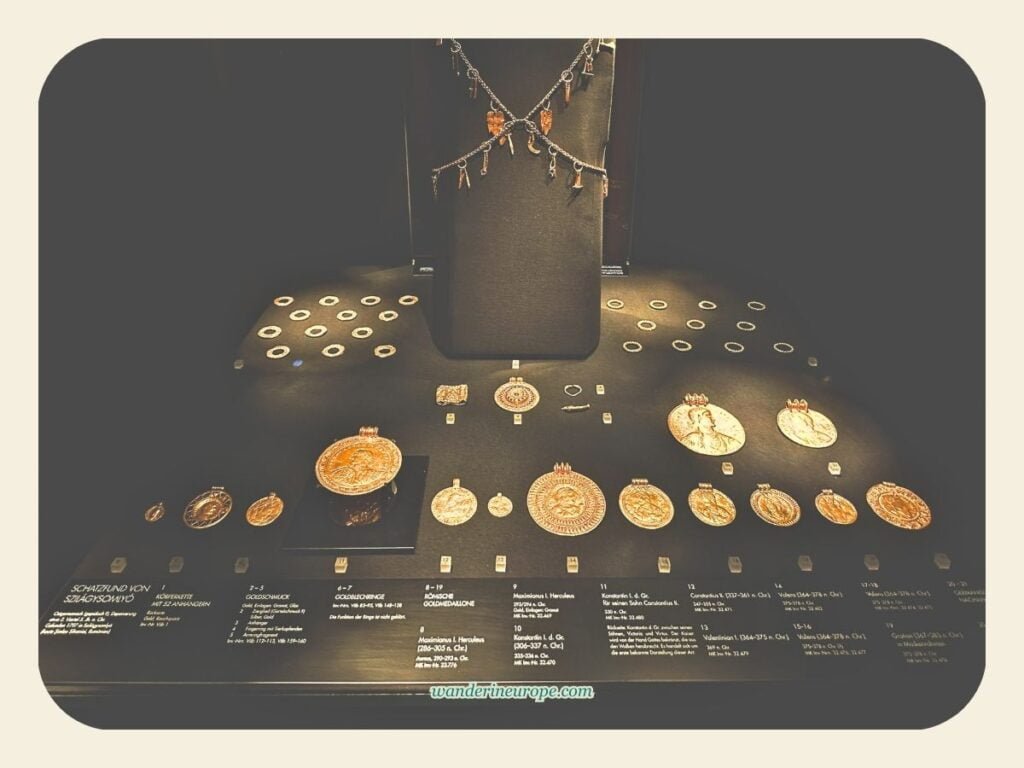
However, you must not underestimate them, especially the museum’s coin collection. As mentioned earlier, it’s one of the most important coin collections in the world. It houses monetary and pre-monetary forms of payment used over a great span of time. To my knowledge, there are coins within this collection dating back to the 7th century BC. I found coins not only from Europe and the classical world but also from Persia and Eastern Asia.
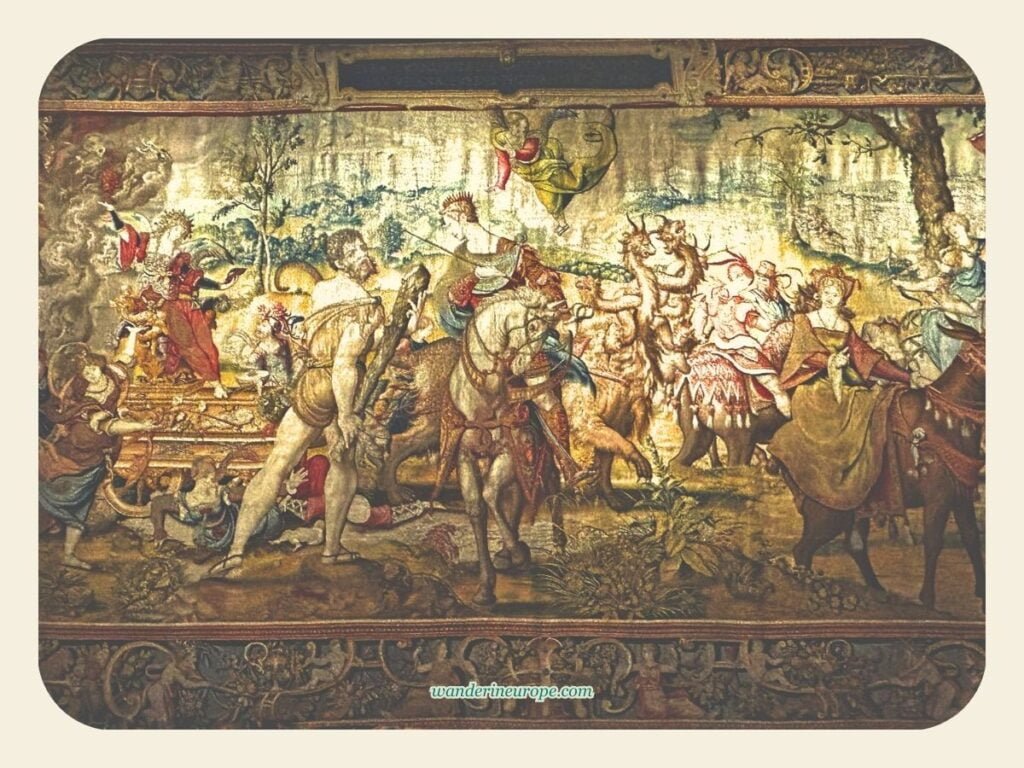
It’s interesting to see how the general design of coins hasn’t changed much. One face has the relief of the head of an important person. The flip side has the relief of symbols and figures, depicting where the coin was used. The Umgang collection, however, contains beautiful tapestries that depict historical events in Europe.
If you want to get a more detailed overview of the exhibits inside the Kunsthistorisches Museum, you can check the official website of the museum, which is linked in the resources section of this post.
Must-See Exhibits
With thousands of exhibits, a visit to the Kunsthistorisches Museum can be quite overwhelming, especially if you don’t want to miss the most interesting exhibits.
If you were to ask me about my favorite discoveries inside the Kunsthistorisches Museum, I have 10 to share with you. However, it’s worth noting that the curators of the Kunsthistorisches Museum have their own recommendations. These are exhibits unique to Vienna, and they’re definitely worth checking out (see the resources section). Below are my 10 favorites that I believe you’d also enjoy seeing.
Good to have: Convenient way of preparing your own tour
The official website of the Kunsthistorisches Museum has an interactive floor plan, that lets you see the contents of each room of the museum. Click on a room and the map will expand, showing you the list of artworks and artifacts in that room. If there’s something that interests you from the list, you can mark it as your favorite. Once you’ve marked an item as your favorite, a number will show up on the room’s location on the map where your marked-favorite exhibit is found. After you’re done browsing, you can save the map as a PDF and use that PDF as a museum checklist. The PDF should contain the map of the museum with the numbered marks to help you recall which room to go to and which exhibits you chose to see personally.
1. The Stele of Hi
located in Room VII, upper ground floor.

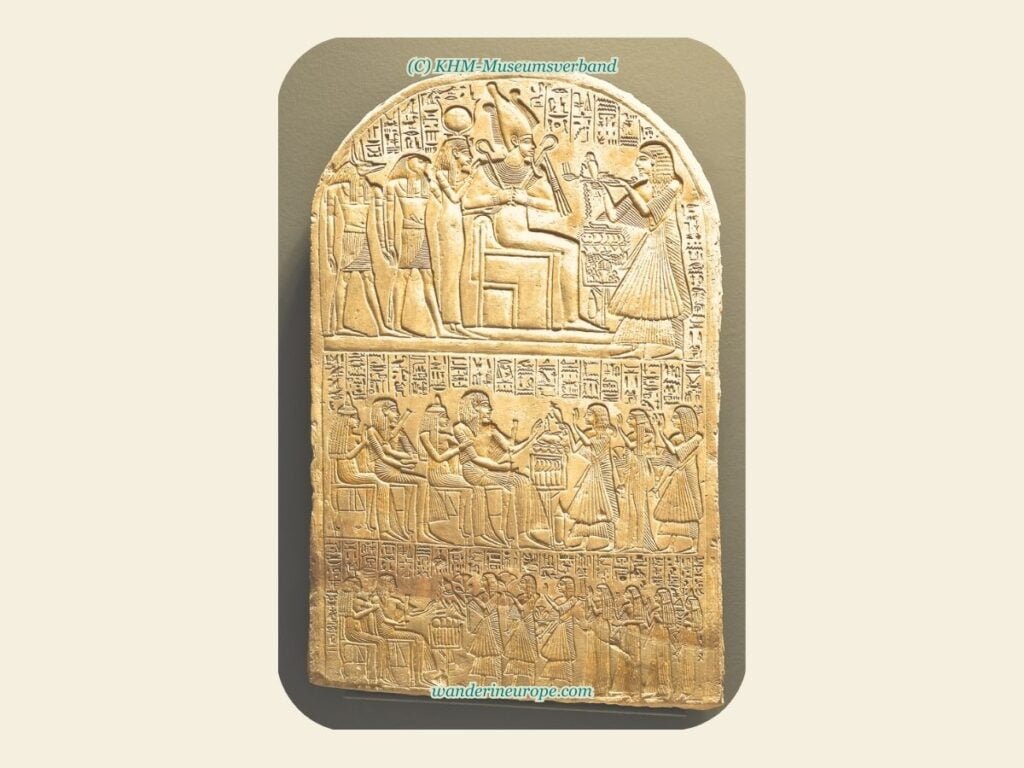

It’s the most detailed Egyptian artifact I’ve found. The lines on the clothes of the people depicted on the stele, and the glyphs above these people, are simply mesmerizing. I wonder what story they tell.Anyhow, it dates back to around 1314-1304 BC and is approximately 1 meter in height. As for the interpretation, Hi, the owner, performs a ritual of censing and pours a libation before four gods. In the lower register, Hi and his family are shown bringing gifts and receiving offerings.
2. The Double-Sided Mask Relief
located in Room 4, upper ground floor.

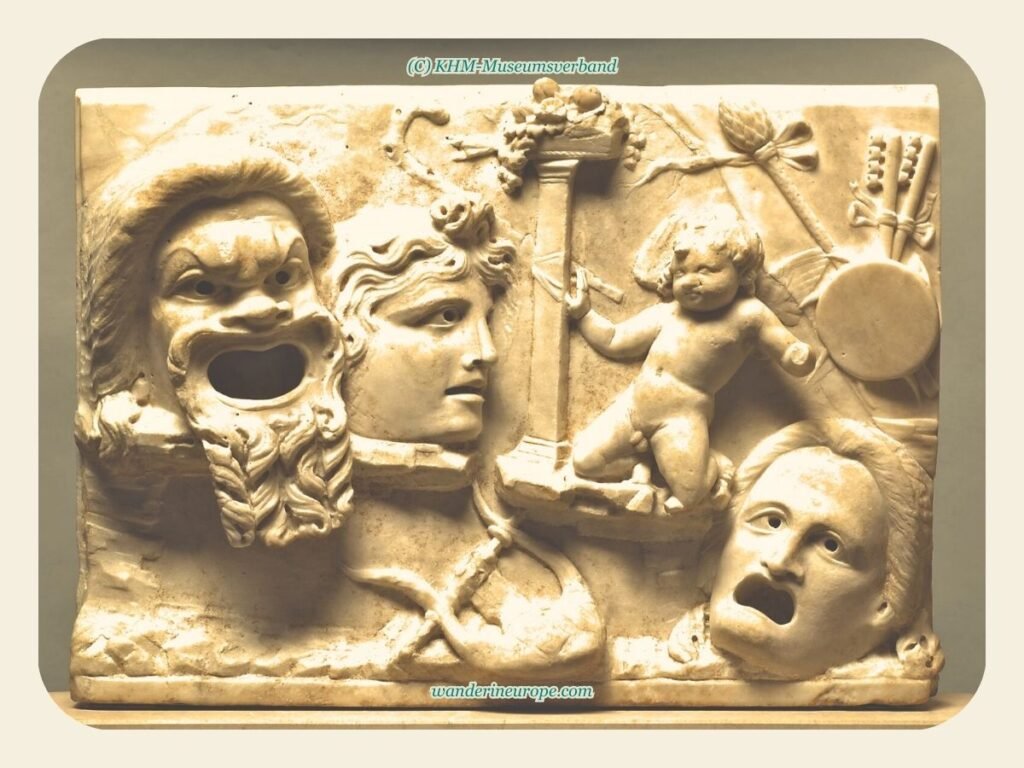

I recommend seeing this artifact or ancient artwork, simply because it has this unique characteristic: emotion. Among the reliefs from ancient times, it’s the only one where I’ve noticed emotions. You can see them right in the facial expressions of the relief depicting the tragic and comic masks. It somehow provides insights into the form of entertainment during ancient times. Interestingly, the majority of the large number of mask reliefs were found in Rome and in the cities of Pompeii and Herculaneum, which were buried by Vesuvius. So, this one that you’ll find in the Kunsthistorisches Museum in Vienna seems special.
3. The Patrons of The Fine Arts in the House of Habsburg
located in Room XIX, upper ground floor.



This painting is one of the largest you can find in the Kunsthistorisches Museum. It depicts how the artist, Julius Victor Berger, views the Habsburg Family, not only as rulers but also as protectors and promoters of art. The painting shows Emperor Maximilian I to Emperor Franz Joseph I, surrounded by their court scholars and artists. Looking at the details of this artwork, you might also think that it’s a painting that represents every kind of art you’ll see in the Kunstkammer section of the museum.
4. The So-Called Viennese Crystal Clock
located in Room XXVII, upper ground floor.

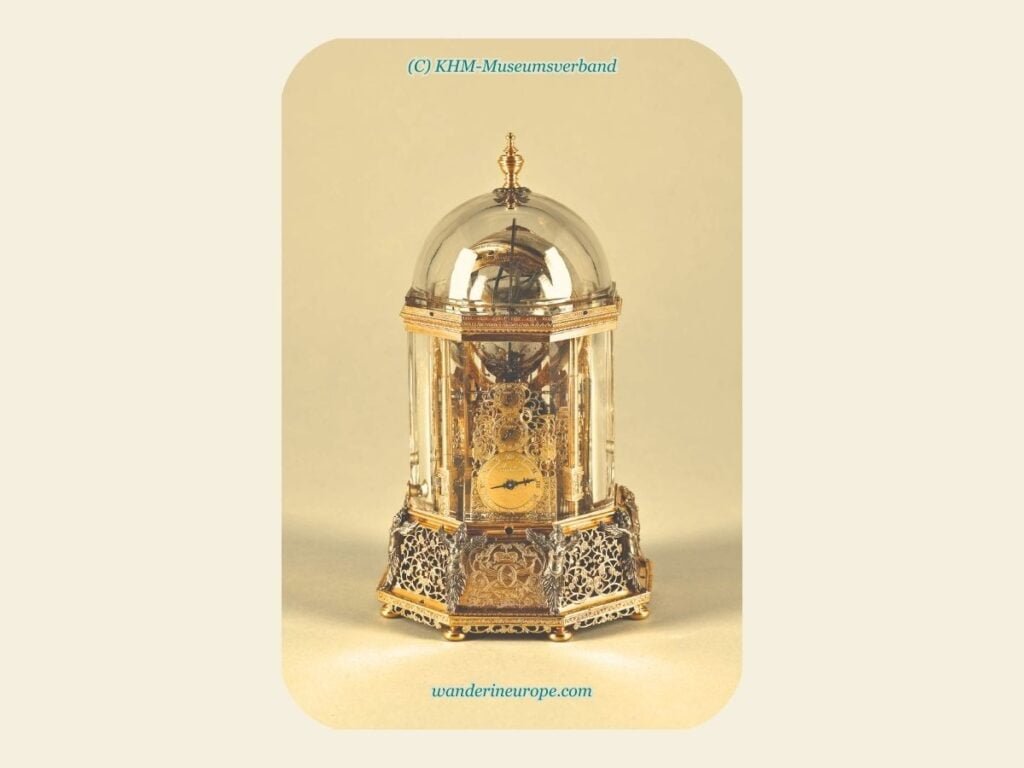

This clock is a must-see because I think it’s one of the most wondrous little mechanical things inside the museum. Actually, many consider it one of the outstanding works in the history of clocks. And I agree with that! This clock, with a representation of the heliocentric planetary system, made me wonder how it worked, how it was created, and why the people from the early 17th century ended up building such a clock. Most importantly, the so-called Vienna Crystal Clock is the second oldest preserved clock with a second display.
5. The Map of the Habsburg Hereditary Lands with a Compass
located in Room XXVIII, upper ground floor.

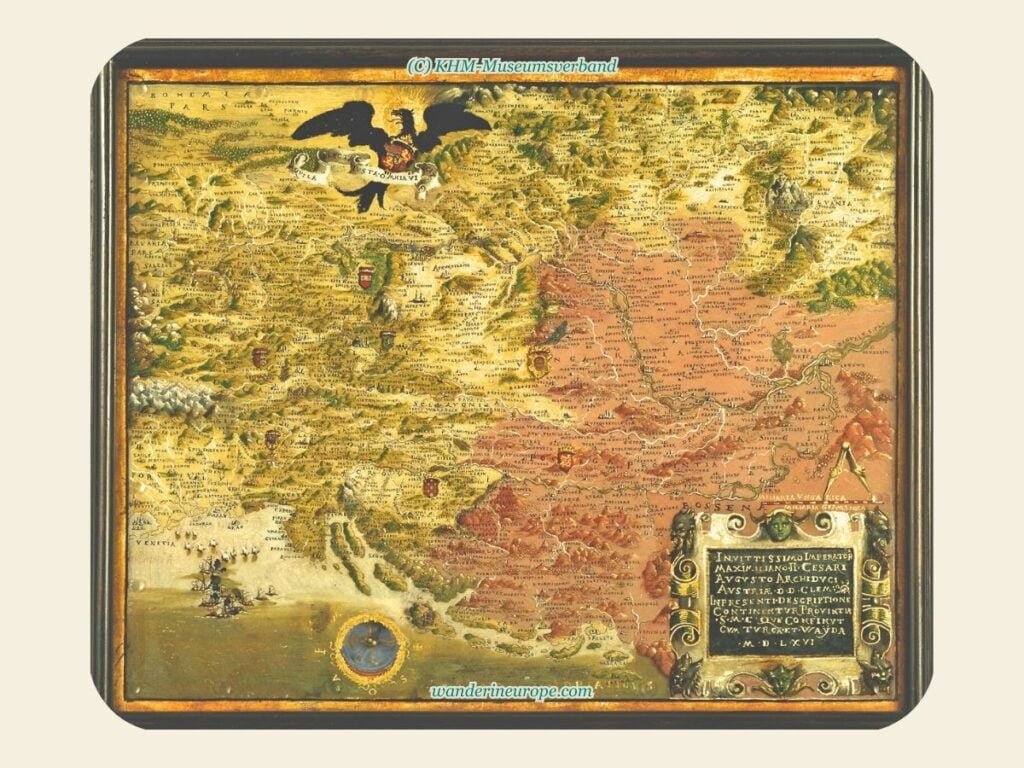

As a map lover and a traveler, old maps like this really fascinate me. This is why it has caught my attention very well. But definitely, it’s a must-see, whether you’re a map lover or not, because it’s a unique map. It’s unique not only because of the artistic design but most importantly because of the way it was built: Hinterglasmalerei. This map is a painting on the back of a glass. It also tells a story of how the Habsburg Empire was once the easternmost frontier of the western world against the Ottoman Empire to the east
6. Bow Carving Amor
located in Cabinet 3, first floor.

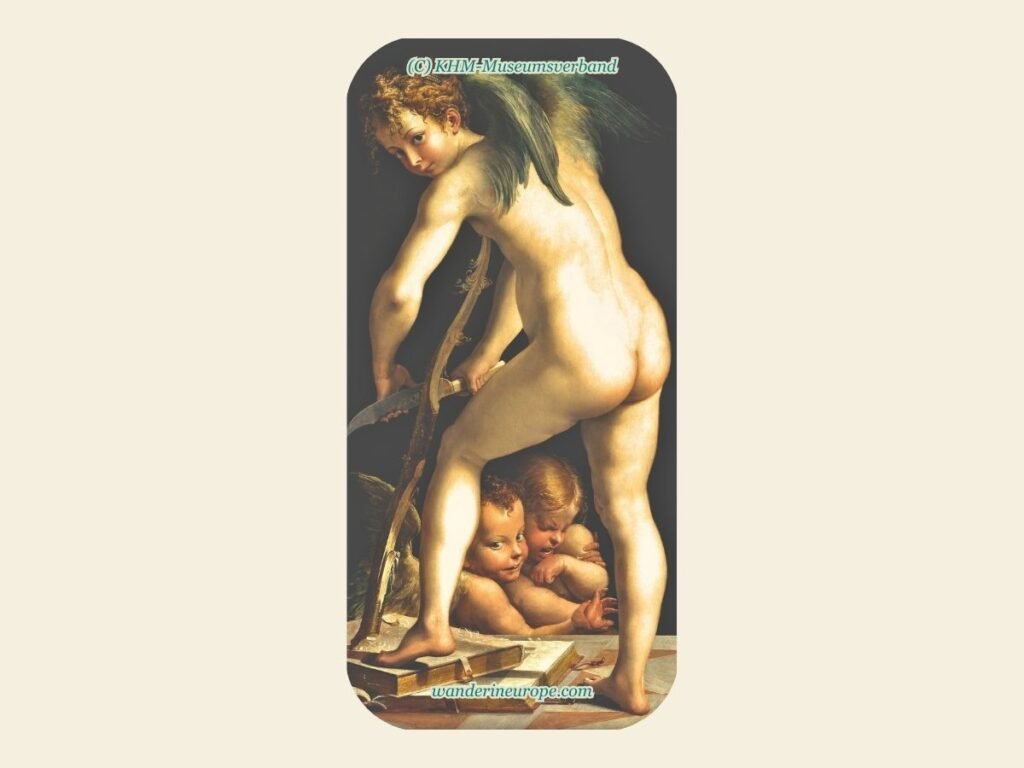

It’s a painting depicting Eros (Cupid), Himeros (Desire), and Pothos (Longing) forming an erotic triad. To me, this painting is a must-see for its uniqueness, especially with how Parmigianino (the painter) depicted Eros: A grown-up man with a baby face. I wonder if this is how people depicted Cupid (a young, handsome, tall, slender, and winged man) in the 1500s. Another thing in the painting that caught my attention was the faces of Himeros and Pothos. The emotions are so real.
7. Series of Seasonal Paintings by Giuseppe Arcimboldo
located in Cabinet 8, first floor.

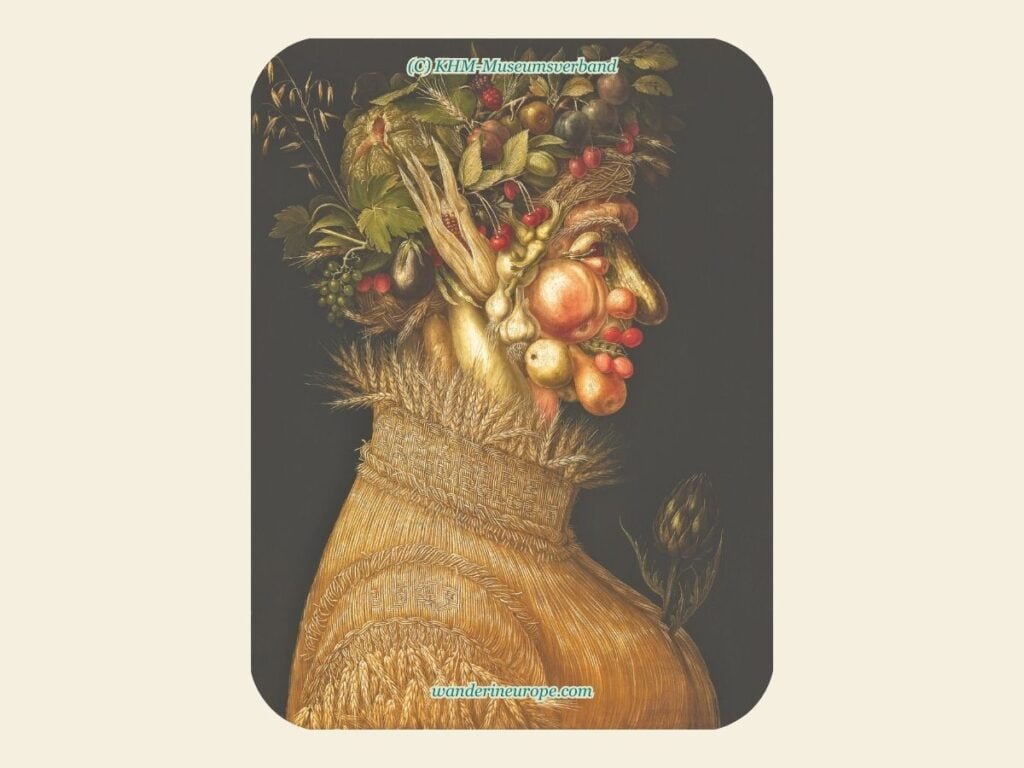

Summer, Winter, Fire, and Water by Giuseppe Arcimboldo, to me, are among the most interesting and unique artworks of the Kunsthistorisches Museum. The paintings depict men and women, with ripe fruits, vegetables, elements, and nature forming their images. It’s a must-see because it’s a painting ahead of its time. Created in the 1500s, it’s one of the earliest forms of “Surrealism” I’ve ever discovered. You know, it was created during the early Renaissance — the time when art focused on a more realistic view of humans. It seems like Giuseppe Arcimboldo had an imagination from the future.
8. Archduke Leopold Wilhelm in his Picture Gallery
located in Cabinet 21, first floor.

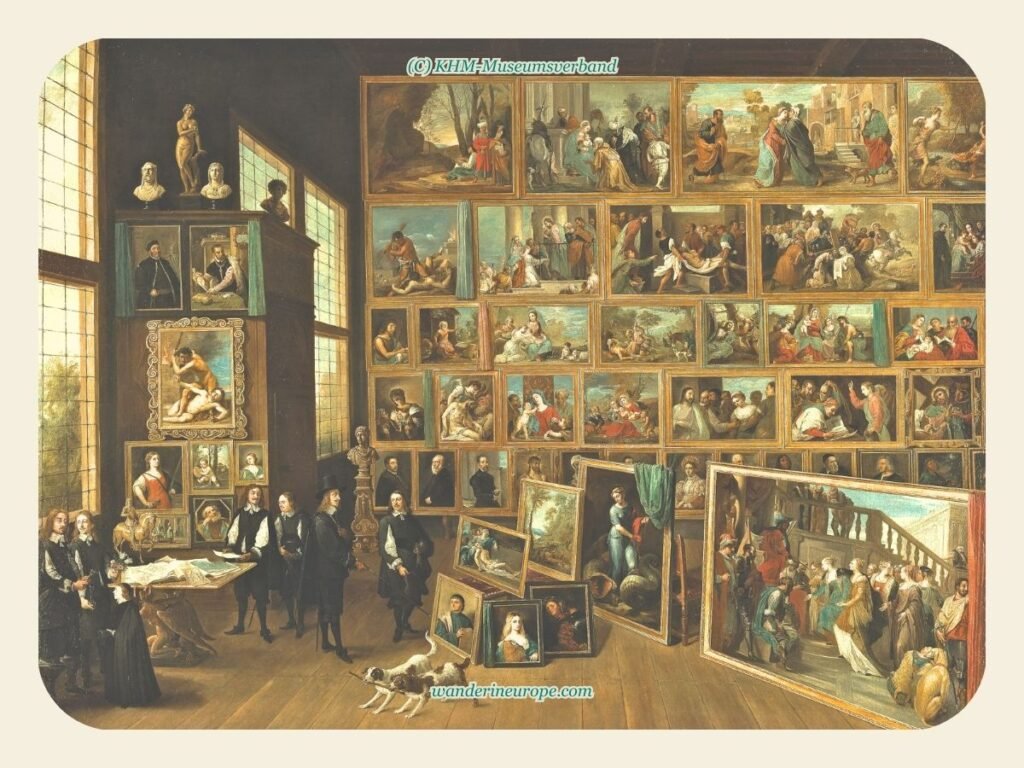

To me, this artwork is a must-see because it’s like a gallery within a gallery—a painting inception; a unique artwork among the Picture Gallery of the Kunsthistorisches Museum. It’s also worth seeing because it’s an epitome of Renaissance art with Teniers, the artist of this artwork, depicting himself in his artwork. The artwork also shows Archduke Leopold Wilhelm as well as other courtiers examining 51 Italian works from the collection of the Duke of Hamilton, which the archduke had acquired shortly before the creation of the gallery picture of the Kunsthistorisches Museum.
9. Die Malkunst
Die Malkunst: located in hall XII, first floor.

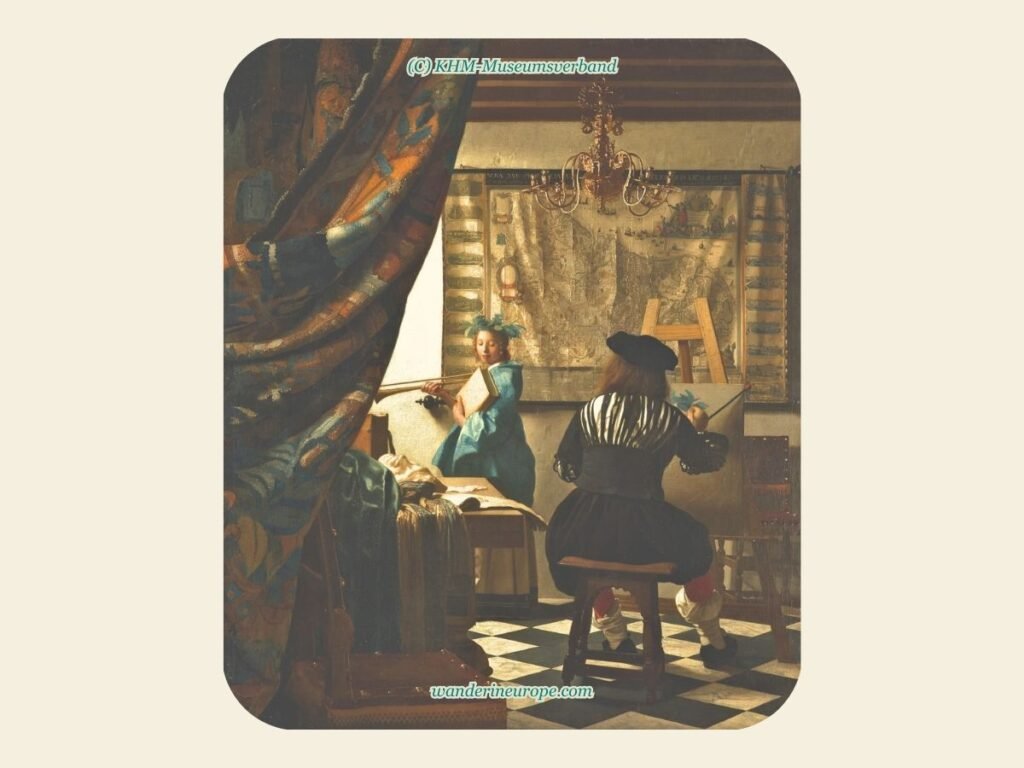

It is a painting depicting a detailed interior scene with the painter himself, painting his model—a young woman who is illuminated by incoming light. This painting, by the Dutch artist Jan Vermeer, is one of the Kunsthistorisches Museum curator’s recommendations for the remarkable use of light and shadow in the artwork. I also recommend it for the same reason, and simply, it’s an eye-catcher within a room full of portraits of people. Die Malkunst is a head-scratching artwork, actually. This question popped up in my head: how did the artist paint himself if he couldn’t see himself as he painted the girl?
10. Turmbau zu Babel
located in hall X, first floor.

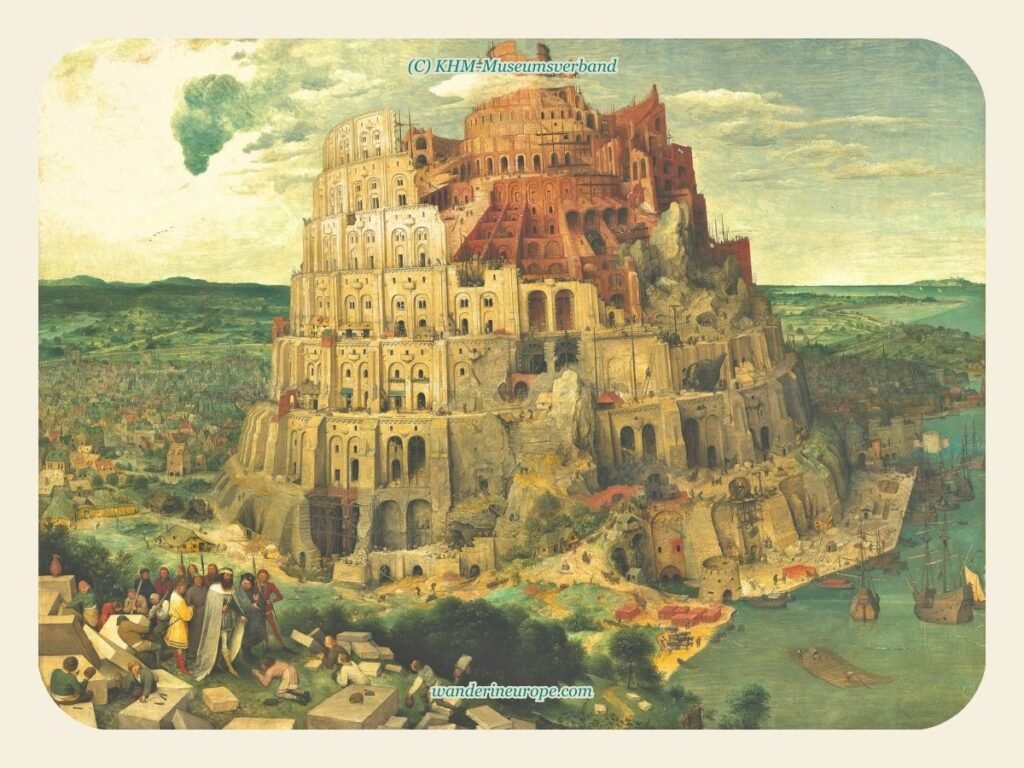

Like Die Malkunst, this painting created by Pieter Bruegel the Elder is another artwork recommended by the curators of the Kunsthistorisches Museum to its visitors. I think this painting, depicting the Tower of Babel, is a must-see for the same reason that the curators tell us: Bruegel’s monumental composition is the most famous, manifoldly copied, and varied classic of tower-building depictions. Bruegel’s meticulousness and encyclopedic interest shown in his painting are quite fascinating, too. In the painting, he depicted a multitude of construction techniques and craft processes, the architectural elements, and so on.

More Photos
To give you more ideas of what you can expect to see inside the Kunsthistorisches Museum, here are the photos of the exhibits and stunning architecture of the museum.
Museum’s Architecture


Other Exhibits


Resources
So, that concludes the overview of what you can expect to find in the Kunsthistorisches Museum in Vienna, as well as the 10 exhibits I believe are a must-see. If you’re interested in a map of the museum that shows the locations of the artworks and artifacts I recommend, you can download the PDF below.
To discover more interesting collections inside the Kunsthistorisches Museum at home, you may check the interactive floor plan of the Kunsthistorisches Museum and the official website of Kunsthistorisches Museum (More Information About The Collections). Here is the list of artworks and artifacts recommended by the curators of the Kunsthistorisches Museum.
Visiting the museum? I recommend booking your tickets in advance to save time and avoid the long queues at the ticketing desk. If you have a Vienna Pass, you don’t need to buy a separate ticket for the Kunsthistorisches Museum as it’s already covered by the pass. Another way to access the Kunsthistorisches Museum is through a Combo Ticket. This not only lets you access the Imperial Treasury, but also helps you save money.
You can check the practical information page of the Kunsthistorisches Museum for the opening hours and frequently asked questions. This could help you plan your visit to the museum.
With so much to explore in Vienna, it’s no surprise that travelers often need to spend several days there. If you’re planning a longer stay, I’ve got the perfect resource for you to find the best hotel deals in the city. The link provided will take you to a hotel browser featuring a map to help you find the most conveniently located hotel for your needs. Please note, it’s an affiliate link. This means that if you book a hotel through this link, I may earn a small commission at no extra cost to you. Your support helps WanderInEurope continue to create more guides like this, which could be beneficial for your future travels. Thank you!

The museums and the palaces are not the only places where you can witness the beauty of Vienna. You have to see its churches! For gorgeous gothic churches, try Votivkirche and Stephansdom; for baroque, check out Karlskirche and Peterskirche. After you explore the Old Town and discover its little gems, you can try climbing up the Danube Tower and see from a breathtaking perspective the area you’ve just visited.
If you have plenty of time, a day trip is recommended, especially if you love architecture, culture, and are a romantic. Here is my first recommendation: Melk Abbey. This UNESCO Heritage Site is among the country’s most spectacular historical landmarks. Also check out the time-transporting castles in Lower Austria. Discover a different side of Austrian history when you visit Kreuzenstein Castle, Liechtenstein Castle, or perhaps Laxenburg Castle Park.
And if you’re a fan of the movie Sound of Music, Salzburg can also be visited on a day trip from Vienna. Salzburg is the movie’s filming location.
Links open in a new tab.


